














PregnAnCy
14 Dear Diary… Humpty Dumpty is Me –When did you last look in the mirror and say, “This is not me”? One woman’s journey of overcoming self image and worth.
Birth
16 Against All Odds… One mom learns the importance of trusting and listening to her body.
BABy
20 Sleep training… Would you do just about anything to get your child through the night. Plus, top 10 Things to know about sleep.
LittLe OneS
25 Preschool to Primary… Our guide to help make that smooth transition from preschool to primary.
Big KiDS
31 Summer Fun in Bermuda… Your guide from Dockyard to St. George’s your kids will never be bored.
35 Disciplining Children... Is your house held hostage by a tiny little person? If ever we needed an instruction manual is now. with them at the same time.
37 Fun with Fitness & nutrition
40 Summer Brain Drain… How well will your kid’s brain be working by the end of summer?



tweenS & teenS
42 BermudaScholarships.com Step by Step guide to search, choose and apply for the right schloarship.
43 Family Centre... Committed to Serving our Youth and Families
heALth & weLLneSS
46 the great gluten Debate… To eat gluten free or not? Plus some great alternatives if you are gluten sensitive.
48 healthy Foods on a Budget...
Are you one of those who believe it’s impossible to buy healthy food while on a budget?
54 Are they Flying Ants or termites? Bermuda Pest Control gives us the 4-1-1 on knowing the difference and ridding the unwanted pest.
56 influential Mothers…These ladies share their most memorable summer moments.
DAD’S COrner
62 Autism… A fathers’ journey in raising his autisitic daughter.


This summer issue is filled with personal stories, practical tips and guidance. From looking through the eyes of how one woman improved her self confidence about her body after having children in ‘Humpty Dumpty is Me’; to teaching kids about stranger danger in ‘There be Monsters’ and ‘How to Recognise Child Sexual Abuse’.
Now for the fun stuff! You and your children have waited for summer and it’s finally here! We have given you 2 amazing articles that will have your children excited and you not dreading the words “I’m Bored! There’s nothing to do!” I know you can hear it now!
Seriously, ‘Super Summers at Black Bay Beach & Park’ is a must experience for your family or your childs’ summer camp (be sure to suggest it). With its shallow and calm waters, you can rest at ease, plus you can rent awesome inflatables, kids’ toys, hammocks, chairs and umbrellas so the fun increases 10 fold for every one! Then return at night with your significant other and enjoy the romantic sunsets.

Here is my challenge to you this summer. Visit every place mentioned in Summer Fun in Bermuda. Collect something from that place that can easily identify that you have been there and have your child write one thing they learnt or enjoyed about each place they visited. Email me at info@bermudaparentmagazine.com once you have everything and be entered for a prize!!
To fun in the sun this summer Publisher & Editor
Update to article “Ear Infections…What parents need to know” from our Spring issue 2013: A month after I wrote the article NEW recommendations came out and extended the optional treatment range up to 2 years of age.
Those under 6 months of age should be treated based on a lower threshold of suspicion that in an older child might lead to a ‘watch and wait’ decision.
Bermuda Parent Magazine wishes to say Thank

PUBLISHER & EDITOR
Katrina Ball
B USI n ESS C O n SULT an T Vic Ball
aD v ERTISI ng Sa LES
Loida Ratteray, Shawnette Smith

DESI gn & PRODUCTIO n Picante Creative
W RITERS & C O n TRIBUTORS
Dr Kuni Frith-Black, Walter Saul, Catherine Lapsley, Robyn Bardgett, Mikaela Ian Pearman, Gwyneth Rawlins, Sara Westhead, Joanne Ball-Burgess, Alicia Resnik, Erin Field, Barbara Williams, The Family Centre and Oxford Learning
n TRIBUTI ng P HOTO g R a PHER S Becky Spencer, Sacha Blackburne, Jessii Terra, Theresa Millet
Bermuda Parent Magazine is published four times a year. Reader correspondence, photo submissions and editorial submissions are welcome. We reserve the right to edit, reject or comment editorially on all material contributed. No portion of this magazine may be reproduced without express written consent of the publisher. The opinions expressed by contributors or writers do not necessarily reflect the opinions of this magazine. Distribution of this product does not constitute an endorsement of the products or services herein.
C O n T a CT U S
info@bermudaparentmagazine.com
Tel: 504-2937
bermudaparentmagazine.com
to each of its sponsors for providing magazines to various schools.
Col. David Burch
If you wish to sponsor magazines to a school or facility contact us at info@bermudaparentmagazine.com

Buying second-hand children’s products is an affordable way to equip a nursery. But it can also be dangerous as some items can be out of date and no longer safe.
Some children’s products, especially cribs and bassinets have caused deaths and have been the subject of numerous recalls. Check our website, www.ca.gov.bm before you purchase any children’s products second-hand.


Ja`Miyah Johnston

June 19
Happy Birthday to an amazing 3 year old. With love always, Mom, Dad and Ja’Leiyah

July 14th
Happy 9th birthday
Zaria love mommy
daddy destiny chyna trinity and Kingston
Tyler Jacob Rance
July 18
Squirt! A year already!?! We love you to the moon and back! Happy Birthday xoxo Mama & Dada


Tristan Burgess
June 6
Happy Birthday Tristan thank you for bringing so much joy and happiness to our world !!! Love your Mom and Dad!!!

Cayden Sekai BartleyWaldron
Aug 4
Happy Birthday to this energetic, independent, loving 3 year old. May you be blessed to see many more and your dreams take you far. Xox mom n dadZaynah!
June 4
Happy 4th Birthday
Nylan ‘Spiderman’ Tyrrell!! Love all your family and friends!!
30 August
Our Little Princess is 4!!! Happy Birthday A’Mani….Hope you have a great day!!! Love Mommy, Daddy, A’Maya & N’Kobi


Seven Vieira
Kyra Vieira
Seven July 11th and Kyra August 8th
Happy Birthday to my beautiful children. May you always know how much I love you and may God bless you forever.

Love Mommy
Ethan Belvin
Dylan Belvin
Ethan July 15th and Dylan August 31st
Happy Birthday
Ethan & Dylan! Love Mum and Dad


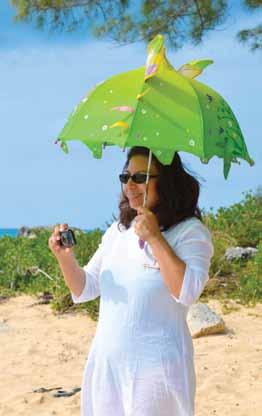
Something new and exciting has come to Sandy’s Parish – Black Bay Beach and Park/Sunset Paradise!
Just in time for summer, Black Bay Beach and Park, has a new concession stand called “Sunset Paradise.” Mr. Vic Ball is the entrepreneurial spirit behind the venture which opened in May.
According to Mr. Ball, “I’m promoting this as the #1 spot for a Bermudaful sunset.” He says locals and tourists can rent hammocks, beach chairs, umbrellas, fun inflatables, kid’s toys, and snorkel gear from the concession stand. You can also purchase towels, snacks and cool drinks. Mr. Ball offers all you’ll need for a perfect summer’s day at the beach for families, summer camps and couples!
Black Bay Beach and Park is located on Malabar Road, in Ireland Island South (opposite the Royal Naval Cemetery). Ireland Island is the northwestern most link in
the chain of islands that make up Bermuda. Located in Sandy’s Parish, it’s shaped like a long finger that forms the northwest coastline of the Great Sound. Ireland Island has a unique history. In 1618 a notorious pirate by the name of Powell ran aground here and was banished by the British Government to what was once an uninhabited spot.
Lucky for us, the pirate is long gone! Of course the area is now inhabited but it’s still rustic. Familiescome out and enjoy a full day in the “country.” Take a hike through Park and Lagoon Park then enjoy a swim in the calm, shallow waters of the three beaches that make up Black Bay and Park. At this tranquil spot, parents can sit back, relax and enjoy the ocean views while the kids play in the sand and have a blast in the water. Everyone will enjoy walking along the beaches and climbing on the rocks. Get the family together and go snorkeling around the reefs and searching for sea glass at nearby “Sea glass beach”. See who can be the first to find the natural arch that’s shaped like
By Alicia Resniktwo touching elephant trunks or more recently called “The Elephant Kiss”! For the adventurous, test your swimming skills by making it all the way out to “Turtle Rock!”
As the father of two young boys, Mr. Ball knows what it’s like to seek out activities that are family friendly. He’s thrilled with his new business and encourages everyone – locals and tourists alike – to come out and enjoy themselves. This is the first time a concession stand has opened at Black Bay Beach (a public park area) that is open Sunset Paradise will be opened seasonally from May through October. This tranquil spot with its crystal clear water is the place for the entire family to have some super summer fun. With the addition of Sunset Paradise, it’s even better! There’s no need to leave when the tide comes in. The concession stand will remain open in the evenings. Why not spend the day swimming and end the evening with a picnic? Watch the sun setting over the ocean. Bring your visitors. Photographers - this is also an excellent spot to get some unobstructed ocean shots - or maybe next year’s Christmas picture of the kids!
Parents, be sure to add Bermuda Black Bay Beach and Park/Sunset Paradise to your list of “must-do” family activities this summer. Even if a trip to Dockyard wasn’t in your plans, come on down. You can’t miss it. The kids will love it and your family just might discover another favorite “Bermudaful” spot!
Mr. Ball is a partner at Strategic Procurement Solutions Bermuda. As the sole proprietor, he brings 20 years of experience in the procurement and supply industry to this new venture.
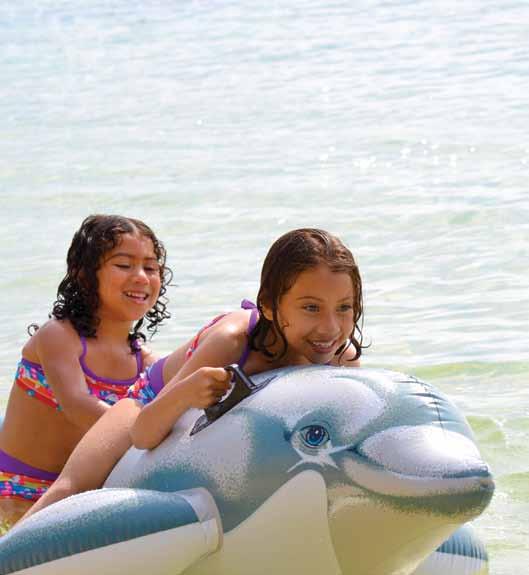


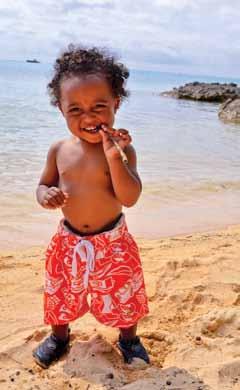





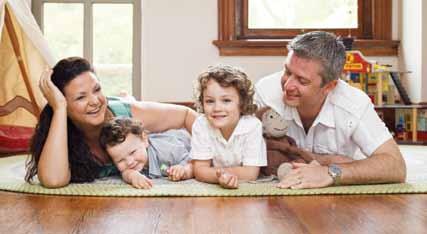




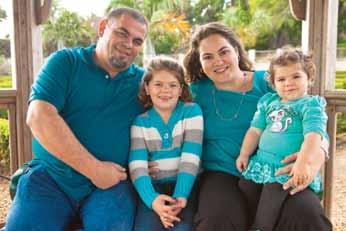
Did you know breastfeeding challenges can be overcome with the right support?


We offer information, support and encouragement to women choosing to breastfeed their babies. If you are pregnant or need help with nursing, contact us. Our services are free of charge and provided by skilled and accredited Leaders.




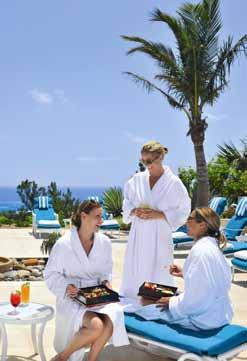

I was standing in the mirror looking at the form that stood before me. It didn’t look like me, however, the real me was toned and well groomed with a tiny brush of makeup to accentuate my eyes. The person staring back at me had a flabby belly, hair gathered up into a messy bun, saggy mom jeans on and a faded, oversized white t-shirt that was stained. “This is not me,” I whispered to myself as the reflection in the mirror frowned back at me. The fragrance that I wore was no longer freesia bloom with a hint of vanilla bean but sour milk coupled with a hint of baby colic spit up. I felt like I was trapped inside of a body I didn’t recognize. The nursery rhyme character I identified with most during those times was Humpty Dumpty.
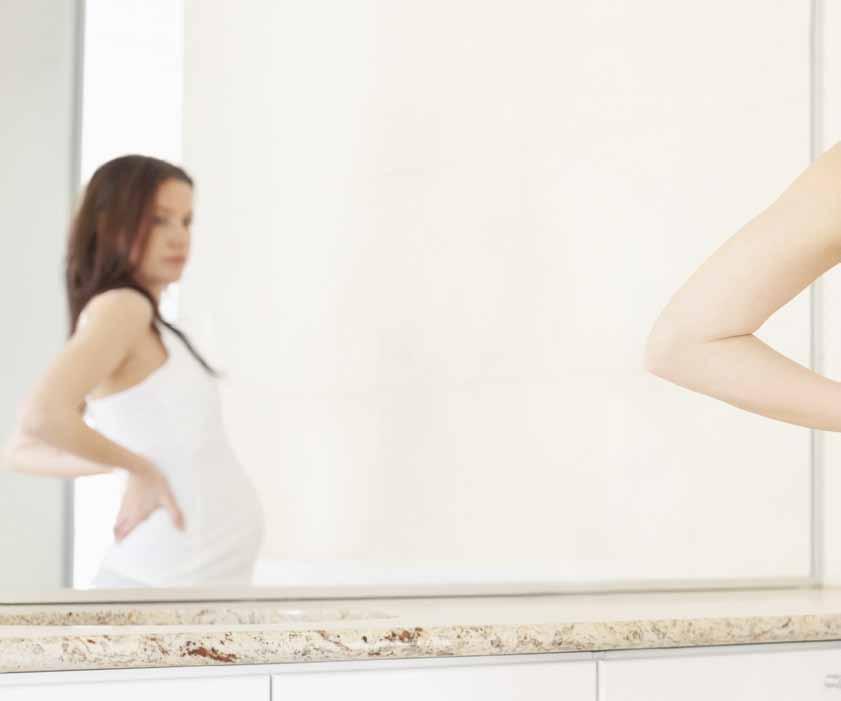
I was somewhat back to myself but that flabby belly still refused to leave. In fact, when I did sit-ups it would pucker in the middle. After a visit to the doctor it was confirmed that after 2 C-sections I had a hernia that needed repair. I was relieved to find out that the procedure for hernia repair is identical to a tummy tuck. “Finally I’ll be myself again,” I thought with excitement. My mind’s eye envisioned pairs of
bikini swimsuits of all different patterns and colours dancing around my head. Humpty Dumpty was happy and decided to sit on a nearby wall to daydream just a little bit longer…
The operation went smoothly, although, the recovery was long and quite arduous. I could not lift my children for 6 weeks and laughing too much was out of the question. But the thought of having my pre-baby belly back made the healing process easier. The doctors told me that they had even given me a new belly button. Hurray for me!
After the bandages were removed everything was not fine, however, from hip to hip on my body, there was a scar about the width of my finger. When I inquired about it the nurses told me that it would fade within a few weeks. A few weeks later the scar was darker and much more visible than when the bandages were first removed. I was told by the doctor that people’s bodies react differently to incisions. Once again I looked in the mirror and said with a frown, “This is not me.” The figure in the mirror resembled an eggshell that had been broken and glued back together again. Looking at my lower abdomen one could tell that the king’s horses and men were not particularly skilled with the use of crazy glue.
That summer, instead of wearing a flashy bikini to the beach like I had planned; I wore my not-so-flashy one piece swimsuit that I wore the year before when my belly was still hanging out. From the outside I looked perfect but on the inside I felt broken. In addition to the scar, I had lost all of my strength and flexibility that I had worked so hard to gain over the years. The little girl on the inside was having a tantrum while kicking and screaming, “Not me! Not me!” and the woman on the outside appeared content and placid.
A year later I was standing in the mirror again gazing at the form in front of me. For the past 12 months I avoided looking at the scar below my new belly button but on this particular day my curiosity began to wonder. Slowly my fingers fell onto the scar and began to trace the path leading from one hip to the other. Like a map leading to my fertility’s past, all the memories of my children’s birth, the emergency C-Section, the transverse baby, the miscarriage and finally the hernia repair came rushing back to my memory. The form in the mirror looked like it wanted to cry.
As my fingers continued to move

Sometimes we sit, we have a big fall
Our heart shell cracks while tumbling down the wall
But no one sees what all the king’s men see When the damage is done inside of me
When the outside looks like Mother Goose
But the cupboards are bear and I don’t know what to do
But as I peer into the mirror I see my reflection
And the scar in the mirror has changed my direction
I thought I was whole but like clay I was broken
Smashed pottery is a vase when the bandage has spoken
Sometimes the king’s horses and all the king’s men Are needed to put Humpty together again
So if life opens a wound and your heart is not hard
Then you are complete while wearing your scar
back and forth across the woven scar, my thoughts about it began to change. This really was the new me. The scar that I dreaded was a part of my body’s history of life and strength rather than a lingering traumatic memory to be avoided at all costs. My body was like a beautiful canvas with light and dark colours woven in between to create the masterpiece. In that moment I began the process of accepting my body as a perfect work of art. This wasn’t the year to pledge that I would work out more or eat less chocolate. This was the year that I would become reacquainted with my body and with all of its wonderful imperfec tions. No longer would my bikini lie in a dusty chest. Eventually I would work
up the courage to wear it again. A smile crossed my face as I thought of what lie ahead for me that year.

As I walk across the coral sandy shores with my children I feel more confident and beautiful than I felt in my early 20’s. Something has changed inside of me. My masterpiece is complete with the blemish. Later that evening while standing in front of the bathroom mirror wiping the last bit of sand and salt from my body the form in the mirror

 BY rOByn BArDgett
BY rOByn BArDgett
The minute we become pregnant, we are literally taken over by another being. We are often consumed by everything we put in our bodies in an effort to make sure our babies are healthy.
For those mothers with a preexisting condition such as diabetes taking care of themselves becomes even more of a task.
Since she was eight, Rache Somner has battled with Type 1 diabetes and has always had to manage what she ate as well as take care of herself physically.
During her recent pregnancy she realised the importance of listening to her body.

“Throughout my pregnancy I really had to watch what I ate and exercise. I also had to be on an insulin pump, which helped control my blood sugar level,” she explains. “Throughout my pregnancy my insulin requirements changed. So for me I had to see an
endocrinologist every two weeks and had to have more ultrasounds than the next pregnant person.
“The concern with having diabetes while pregnant is that the baby can some times tend to be bigger so they had to monitor my baby’s growth to make sure she didn’t have any abnormalities. Basically it was important for me to keep my blood sugar within a good range, which was kind of difficult but it was what’s best for the baby.”
The challenge also came with keeping up with
Rache’s job as an Emergency Room nurse.
“I was doing 12-hour shifts running up and down saving someone’s life,” she explains. “It was difficult.
“A high stress environment is not what you need when you’re pregnant. At about 24 weeks my ankles started swelling and I really wasn’t meant to be on my feet for so long.”

Around 30 weeks she was taken off work completely. “It was tough. There were others who were pregnant at the same time and didn’t have the same problems but my family is everything to me and so I knew it was important to listen to my body.”
At her 34week appointment during a routine non-stress test her blood pressure had skyrocketed.
“I was monitored for a few hours but my blood pressure kept going up and up,” she says.
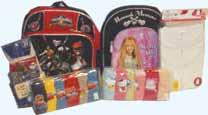


Rache was diagnosed with preeclampsia – a serious condition characterised by high blood pressure. The only thing to prevent the problem from escalating was to deliver the baby.
“I had been home that day doing some serious nesting so I knew that was a sign the baby was ready to come!” says Rache. “The doctor assured us that the baby was fine and that her lungs would have been fully developed. She said we could wait but I was not okay with waiting and so I was prepped for a c-section.”
The day after her birthday on September 22, 2012, Rache and her partner, Wolde Place, welcomed 5lb 5oz daughter, Chinyere Place-Somner.


It took some time for Rache to create a bond with her baby girl, who spent two weeks in the special care unit at King Edward VII Memorial hospital. But she realised quickly what it meant to be taken over completely by such a
little person.
“Your whole life changes,” she reflects. “Being an ER nurse I would see mothers crying while we had to give their child an injection and I didn’t understand. Literally everything I do, I do for her.”
While Rache’s diabetes didn’t negatively affect Chinyere, who recently won the Bermuda Sun’s Oh Baby! Photo Contest, Rache soon realised that motherhood would continue to have a huge affect on her body.
“I was breastfeeding and stayed on the insulin pump but because breastfeeding burns so many calories my blood sugar kept dropping and I passed out twice in the middle of the night and was rushed to the ER. I went off the insulin pump and continued to breastfeed and gave myself insulin via injection and worked out what I ate.
“That was another thing I learned that my body is no longer mine,” she says. “You have to trust and listen to your body. Don’t ignore the signs.”
Rache has had to give up shift work to take on more normal hours, but with all the changes she says that she wouldn’t trade her daughter for the world.
“Take care of yourself while you’re pregnant,” she advises. “I kept working through the ankle swelling when I should have taken it easier. Get a pedicure, take a day to do absolutely nothing because once the baby comes there isn’t a lot of time.
“Whoever came up with sleep when the baby sleeps was so wrong. I really thought that would happen but it was the biggest slap in the face. You need to take care of yourself physically, mentally, everything. But at the end of the day I cannot wait to leave work every day and pick her up from school.”





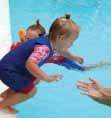





Like any other first time expectant mother, approaching her last few weeks of pregnancy, I had a number of emotions and questions – how much would labour really hurt, would my son be healthy, would I be a good mom, and would I ever sleep again?
Ihave never been a “night owl.”
I’ve always needed 8 hours of sleep. So when my water broke, my hospital bag was packed with the essentials (pajamas, breast pads, etc.) but I also had well-leafed copy of a well-known sleep training baby book. I needed my son to sleep through the night stat!
This book appealed to me because the author was the only person who had the courage to tell me (and my newborn) what to do every hour of every day – even when to have a cup of tea! This sounded like sleep training for dummies! After the “joys” of labour, the rampant hormones, and the general shock of becoming a mom, really felt like a dummy needing to be told exactly what to do and when.
The author’s advice and proposed schedule worked like a charm…for the first two weeks. However, my son
didn’t want to play along and refused to fall asleep at the exact time that the book demanded. This threw the entire schedule and because I was relying on a book to care for my baby, I had no idea what to do next!
I spent the next few weeks searching bleary-eyed through every possible book on sleep training. I was overwhelmed, confused, and above all else, exhausted!
Then, like a fairy godmother, I met Linda Russell – AKA the Sleep Lady. Based in Scotland, Linda works with families all over the world (including one in Bermuda who made the recommendation) to get their little ones sleeping through the night. Unlike a book, Linda really gets to know you and your baby. She aims to understand your lifestyle and your nature.
Linda firmly believes that babies shouldn’t be pushed into a schedule for the first six weeks – they should be
enjoyed! Young babies need to be held, comforted and given time to adjust to their new surroundings.
After those initial six weeks Linda gently nudges your baby towards having a small degree of semblance to their days. She asked that I keep a journal to track the times my son would sleep, feed, etc. which I would email her every few days. This allows Linda to see what your baby naturally wants to do – a blueprint from which she begins to design a schedule to fit your life and child.
Linda starts with their feeding routine rather than their sleeping habits. She suggests aiming to feed your baby every two hours eventually stretching to three hours as your baby grows. Sleep time naturally then falls around these feeds.
We continue this way, tweaking the schedule gently as the baby grows and requires less sleep and feedings. As a general rule of thumb, it takes four days

1. Babies will do a lot of sleeping and eating in the first few weeks and will not be on any type of set schedule. Take care of your babies’ nutritional needs and honour their sleep!
2. Never wake a sleeping baby! The only exception would be if your baby for some reason is underweight or the doctor has advised frequent feeding. If your baby is sleeping, let her sleep! My advice would be not to let her sleep over 5 hours during the day in order to ensure nights and days don’t get mixed up.
3. Your babies body clock (Circadian Rhythm) will develop naturally as baby develops. By about 3 months it will be more like an adults and will get more and more consistent with time.
4. Swaddling a baby up to 3 months really helps with keeping baby comfy and cozy and controlling the startle” (moro) reflux that can wake babies.
5. Try not to let the books scare you with how many hours your baby “should” be sleeping or what your schedule “should” look like. Follow a Wake, Eat, Play, Sleep schedule and you will be just fine and way less stressed!
6. During the hours of 5 and 6 am little ones are in a REM (light and dreamy) state of sleep where little things can wake them- a noisy muffler next door, birds chirping. Don’t be surprised if your child stirs or wakes during this time. Give them a few minutes to try and fall back asleep before rushing in.
7. A dark room is best for napping and nighttime. Blackout blinds will be your bestfriend!
8. Baby’s sleep can be interrupted by stimulated items in the room- flashing turtle lights, bright aquarium toys- less distraction = less stimulation! Much better for infant and toddler to sleep!
9. Try not to move your toddler to a big boy or girl bed until the age of 3. At this age they are better able to understand consequence and it will make for a much easier transition. Plus it is safer when they are older.
10. A bedtime routine is KEY to do help your baby prepare for the long sleep. Do the same thing every day. Babies love consistency and routine!
Janey Reilly, founder and principal of “WeeSleep”, is a leading professional infant and toddler sleep coach. Janey is also the Regional Director Of Canada for the Association of Professional Sleep Consultants.
Janey’s professional and thorough approach along with a commitment to her clients has helped her provide sleep and rest to countless families. Janey believes that providing infants and toddlers positive sleep skills in a gentle and guided way will in turn not only create healthier children but healthier and more joyful parents with a more balanced home life. www.weesleep.ca
to implement changes to your baby’s schedule – so don’t despair.
One of the most useful tips that Linda gave me was setting an evening routine right off the bat! For my babies, it was dinner at 5:30 pm, diaper-free playtime by 6:00, “bath” at 6:15 (for newbies a “soldier bath”), another feed in the darkened bedroom by 6:30 and then into their crib by 7:00 pm.
I found that by implementing this one consistent routine, the baby gets to sense the time of day and how it is different from any other and helps them to differentiate between night and day (a challenge for babies and often the cause of sleepless nights).
Linda makes herself available through emails, texting or phone calls. Should questions arise or the schedule disrupted, she can always be reached for advice.
In addition to sleep advice, Linda assists with nursing concerns, baby reflux, weaning, potty training, and effective discipline. She is truly a wealth of knowledge on all things children. And for those concerned, Linda does not subscribe to the “cry it out method”. She is gentle and sensitive in her approach to babies and sleepy parents!
Using a sleep trainer or even a book isn’t necessary or desirable for everyone – parents must do what feels best for them and their babies. For me, however, through Linda’s gentle directions, my son began to sleep through the night at three months old and my daughter at six months (remember, no child is the same).
My children are fantastic “sleepers” and my husband and I enjoy a quiet house at 7:00 pm each night. But even greater than having my eight hours of sleep back, is that Linda helped me to tap into my natural, but fledgling maternal instincts. She showed me that I do know what is best for my children – I just needed a little guidance (and sleep) to boost my confidence.

For more information on Linda Russell please visit www.thesleeplady.co.uk
Whether
fter my last column, I realized that I had only written about preparing to be a dad. At some point, I have to start writing about being a dad. Before I write about becoming a dad – that unforgettable day my child was born. So here goes.

I’ll spare the gory details, but to say the least; it was a long, exhausting, scary and an absoultely exhilarating day. All the books and classes in the world could not prepare me for that moment of birth. I muttered, “it’s a girl” through a closed throat and welled up eyes. Amazing. I can only describe it by saying I have truly experienced love at first sight.
Not too long after birth the nurses handed her to me, weighed, measured, bathed and swaddled, so that I could really hold her for the first time and start getting to know her.
I’ve never seen anything so beautiful. I couldn’t take my eyes off her – rapture… I simply couldn’t look away.
Her deep blue eyes flicked softly around the space in front of her and everytime they stopped on my eyes I held my breathe. I talked to her and I could see she was listening. Occasionally, she would coo or gurgle. She scrunched, stretched and pushed her face into every possible expression, including a smile. I saw her first smile (although I don’t think she meant it). Her hands and feet pushed out against the swaddled blanket and she flexed her long fingers.
“She’s strong,” I said to no one.
She was long and muscly, ‘wiry’ as they say in Britain. She had unfolded and I could no longer imagine how she’d ever fit inside her mother.
I put my finger in her hand and she gripped it, tight. I put my face down next to hers and kept talking about everything. I told her where she was and how much I’d looked forward to meeting her. I told her that she had her mom’s eyes, which she does, and I marvelled at that, looking back at Deb and telling her the same thing. I told her I’d be there for her every step of the way and that I’d make sure she had everything she needed and that I’d
support her in everyway so she could become the person she came here to be. I laid out my parental contract. It’s her life and I’m here to help when she needs it. I’d teach her lots of cool stuff and to love this planet, although, it can be a crazy place sometimes; is full of wonder and beauty. I told her I would love her unconditionally (and I do) and that she was going to teach me as much as I teach her (and she does).
Then, I heard someone ask if we had a name. I looked over at Deb and nodded ‘Lara’, she smiled and nodded back. And just like that, I was a dad.
• Play-based screenings for 24 – 30 month old children

• Parent and Children’s Book Library
• Toy Library
ALSO AVAILABLE:
• Parent Infant Group
• Premature Infant Programme
PArEntIng wOrkShOPS:
• 1,2,3,4 Parents!
• 1,2,3 Magic

tOPICS AVAILABLE:
• Motor Development
• Developmentally Appropriate Programming

• Bonding: Early Steps to Attachment
• Behaviour Management
• Language Learning

It’s an emotional and exciting time for parents and children when transitioning from preschool to primary school. Children will look to their parents for guidance and security during the first few daysand being calm and organized plays a major part in doing so. According to Dumfries and Galloway Council, “Transition should be viewed as a process and not an event; planned carefully to ensure children have positive experiences and the move from home to pre-school and pre-school to primary is as smooth as possible.”
There are many tips to help you and your child to ensure a positive transition and this article will help make planning those important first days easier.
Remember when it was your first day of school and life changed rapidly? Make sure that you plan accordingly because there are a number of things to organize before school starts. Begin budgeting for new costs like school supplies, uniforms, shoes, and school contributions to enhance your child’s educational and sporting programs. This will provide a safe and stable change for school.
Next, become your child’s first teacher by doing activities at home during preschool because the best teachers are their parents and this will spark an interest to more learning and will shape your child’s attitude to attend school. While being your child’s first teacher, they become confident in learning and are excited about attending school, this will continue in transition for the rest of the school year. Then, plan to pick up your child for the first week of school. If you are working full time adjust your schedule just for that week so your child can feel comfortable going into primary school. Children need to be aware of your transitions in schedules, so if you
have to leave your child in after-school care tell them and provide things from home so they can feel comfortable while waiting for your arrival.
To be sure of a smooth transition, share your child’s interests and strengths with the teacher so they can incorporate it during school activities. If your child loves music or a specific sport make the teacher aware of their interests and strengths. Your child may also want to share their favorite toy with the class, which will provide a connection between home and school.
Lastly, keep your daily routines the same by having the same breakfast as usual and talk about school while including other topics that interest them. Leave home early to avoid being late to their first day of primary school. You don’t want any stress on the first day of school.
It is very vital to manage school routines to keep everyone’s schedule on track. One of the hardest moments in transitioning into primary school is the first day of school. At first, you

may want to stay for a while until your child feels secure at school and you might want to guide your child while they settle in with their belongings, but the best thing to do is say, “Have a great day, See you this afternoon,” as a short goodbye on the first day shows confidence and independence on their behalf. Keep in mind, you know your child the best so if it is necessary to stay or go, listen for their response.
At the end of the day, school will finish generally at the same time where they will gather at a regular place for pickup. The teacher will wait with the children, which should be addressed to your child. Make sure your child and the teacher know who will be picking them up each afternoon. Children can get upset if you or someone else is picking them up. Check with their teacher about the best time and place to arrive
in the afternoon.
As the school year progresses, children can get very tired at night because they are doing so many new and exciting things. For this reason, it helps if you keep your scheduled routines like bath time, meals and reading as consistent as possible. Leaving time for you and your child to relax, talk and get a good night’s rest.
The last way to manage school routines, is involving family members to take part in visiting their new school and assisting in homework. If everyone takes time out to welcome them in their new environment, it will expand there ideal for school. Family can also help with their school work by reading a book at night or playing school related games to keep them on track for the school year.

A relationship with your child’s teacher and school counselor is a great way to provide a safe and happy environment at school. Addressing issues of child bullying and school safety precautions is important to discuss with your child’s teacher. By doing so, this will provide a two-way relationship between home and school which is best for you and your child.
Communicating with those who will impact your child in there first year of primary school is a method to understanding things that your child is surrounded by daily. In your relationship with your child’s teacher, you should also keep them informed of any changes in your child’s life that may impact on their learning or enjoyment for school.
Only you know your child best, so in all you do listen to them and always be one-step ahead to guide and protect them as they transition from preschool into primary school.
Hooray!
You and your child are ready to start primary school. The fact that you’re an awesome parent and you’ve planned ahead; it will produce great success for the school year. Have fun!

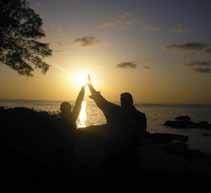



Never has arti cial avor or articial sweeteners


Toddler sized portions
Designed to develop and advance toddler feeding skills


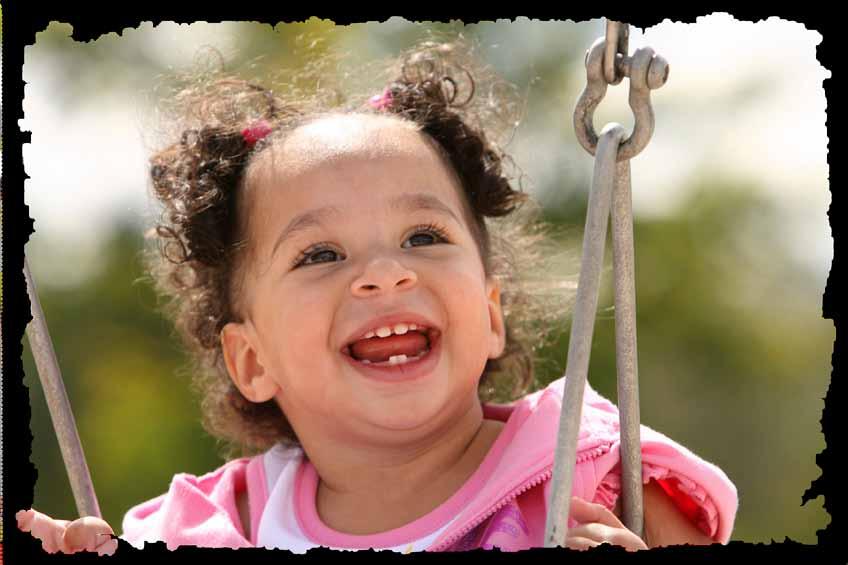
IMPORTANT NOTICE: The World Health Organization recommends exclusive breastfeeding during the first 6 months of life and continued breastfeeding for as long as possible. As babies grow at di erent paces, health professionals should advise the mother on the appropriate time when her baby should start receiving complementary foods.





 BY ALiCiA reSniK
BY ALiCiA reSniK

“I’m bored. There’s nothing to do.” Words we hate hearing - especially when we’re surrounded by 21-square miles of adventure. Journey through nine parishes – each with a wealth of history and activities for families.
Begin in Sandy’s with the Royal naval Dockyard. Built as a British Royal Naval Base in 1809, Dockyard is packed with activities. Start with the national Museum of Bermuda. It features 16-acres of grounds with eight exhibit buildings and an extensive historical collection. Walk along the Northwest Ramparts to Casemates Barracks. Learn about Bermuda’s seafaring history in the Bermuda Maritime Museum. See the dolphins at Dolphin Quest. At the Commissioner’s House view exhibits and the 1000 square-foot “Hall of History” mural. Painted by Graham Foster, it traces 500 years of Bermuda’s culture and history. Stroll through the Bermuda Craft market, Bermuda Clayworks, Bermuda Rum Cake Company. Watch a glassblowing demonstration at Dockyard glassworks. Shop in the Clock Tower Mall and view local artists’ works at the Bermuda arts Center. We’re not done yet! There’s the playground to visit, the neptune Cinema and the Snorkel Park for swimming, snorkeling or playing a round of mini-golf at Bermuda Fun golf.
Leave Dockyard, and stop and enjoy Bermuda’s newest concession at Black Bay Beach and Park, enjoy the hammocks and inflatable’s. Take a walk around Lodge Point Park and Lagoon Park. Stroll through quaint Somerset Village to Mangrove Bay. Stop at Daniel’s Head Public Beach and Park – this quiet stretch of beach is a lovely spot for a swim. There’s also a playground and nearby Somerset Long Bay Park & nature Reserve – hike through this coastal mangrove area that’s home to resident and migratory birds. Not to be missed is Heydon Trust Estate. This private park is set on 22-acres of land that includes a Chapel built in 1616. On to Scaur Hill Fort and Park. The fort was built in the 1870’s to guard the crossing at Somerset Bridge – the smallest drawbridge in the world. It’s only wide enough to let the mast of a sailboat through! Finish up with a hike through Hog Bay Park’s 32-acres of rural countryside. It’s one of Bermuda’s best birding locations and
at low tide, there’s a small beach waiting for a sandcastle! After all the activity of Sandy’s, it’s time to hit the beaches of Southampton and Warwick! Southampton boasts a coast line of beaches that includes West Whale Bay, Church Bay, East Whale Bay, Chaplin Bay and Horseshoe Bay Beach. Not too tired from swimming? Hit a bucket of balls or play a round of 18-hole mini-golf at The Bermuda golf academy. Then climb 185 steps to reach the top of gibbs Hill Lighthouse. Built in 1846, it’s the oldest cast iron lighthouse in the world. The lighthouse’s lamp can be seen 26 miles away.
In Warwick, enjoy more beach-time at Stonehole Bay, Jobson’s Cove and Warwick Long Bay. Go horseback riding at Spice Lands or bowling in Warwick Lanes. Let the kids run and climb at Warwick Playground. See breathtaking cliff views of the South shore at astwood Park. Then hike around Sherwin’s nature Reserve – the second largest bird sanctuary on the island. Head

Another family activity is walking and cycling along the Bermuda Railway Trail. Once called the “Old rattle and Shake” the railway began its route in 1931. Due to financial difficulties, it closed but, in 1980, the Bermuda government converted 18 of the original 22 miles of track into pedestrian trails. you can follow a route from Dockyard to St. george’s. Be warned, there are a gaps – especially between Paget and Devonshire where the trail ends and you have to follow the main road. the rest of the railway trail offers lovely, secluded, traffic-free Bermuda! glimpse azure coastal water, farms, trees, plants and backyards. there are even some spots where the original train tracks remain.
to Paget and Paget Marsh. This 29-acre nature reserve features the last surviving endemic forest of Bermuda Palmetto’s and Cedar trees. There’s a boardwalk for viewing. Now head to Elbow Public Beach for a swim. Walk, run or ride bikes around the Botanical garden’s 36-acres. Visit Camden, the official residence of the Premier. Browse through an impressive collection of Bermudian inspired art at Masterworks Museum of Bermuda art.
Are you ready for a whirlwind of activity in “Town?” Hamilton (in Pembroke) has been the capital city since 1815. Begin at the Bermuda Underwater Exploration Institute. Stand inside their shark tank and take a ride on the simulated “submarine.” Learn all about the mysteries of the ocean and view exhibits that include shipwreck artifacts, shells and a bathysphere. Stop at Fort Hamilton. Built in 1889 to oversee Hamilton Harbor, the fort has plenty of cannons, gun emplacements and ramparts to keep kids busy. Afterwards, give them a “view into politics” with a tour of the Session’s House, House of assembly, Cabinet Office, Cenotaph and War Memorial. At City Hall see a variety of art at the Bermuda national gallery and The Bermuda Society of arts gallery. The Bermuda Cathedral is another
historic stop. Admission is free but, for a fee of $3, climb 143 feet to the top of the tower! While in Town, you can take a ferry ride, a horse and buggy ride, go to a movie or play tennis at the Stadium. Or simply relax in one of the City’s parks - albuoy’s Point, victoria Park, Par-la-ville Park and Barr’s Bay Park. In Spanish Point visit Admiralty House Park and Clarence Cove. The house was built by the British Military and, used in World War II as a “signal center.” Hike around the property and find the man-made cave - built in the 1860’s by British convicts. Cool off with a swim in the cove. No visit to town is complete without a stop at the Children’s Library. Bring your library card and check out some books!
In Devonshire, stroll through Palm grove gardens. Built in 1954, this private residence is open to the public during the week. Let the kids say hello to birds in the aviary then find the lily pond shaped like the map of Bermuda. Close by is Devonshire Bay Park with Devonshire Bay and the ruins of Devonshire Bay Battery – the site of an old colonial fort that dates back to 1616. This park’s a great rock climbing spot! For the golfers, hit a bucket of balls at Ocean view golf course. At the arboretum, the kids can run around the 22-acre national park or walk around the marked exercise trail.
In Smith’s, go back in time with
a visit to verdmont. Built in the 18th century, this colonial home has remained virtually unchanged for 300 years. The museum has a collection of antiques, including Bermuda cedar furniture and a child’s nursery. The garden has herbs, old roses and fruit trees. Show the kids what life was like before the electronic age! Then walk around 64-acre Spittal Pond nature Reserve. This is Bermuda’s largest wildlife sanctuary. Spot a white heron, clamber over rocks and search for crabs in the tide-pools. Find Portuguese Rock – which bears the inscription from sailors visiting in 1543. Tired from all the walking? Go swimming at John Smith’s Bay Beach.
In Hamilton parish in Flatt’s village, visit the Bermuda aquarium Museum & Zoo. The Aquarium’s impressive collection includes 200 species of fish, green turtles, seals and flamingoes. Find the sharks in the 145,000 gallon North Rock exhibit. Visit Ring-tail Lemurs in Madagascar, Tree Kangaroos in Australasia and find Scarlet Ibis’ in the Islands of the Caribbean! Stop off at Shelley Bay Park. The bay was used as a boat building center in the 1800’s and a horse racing track in the 1930’s. Now it’s a playground for the kids with a short trail through a nature reserve of red mangroves. Walk out as far as you can in the calm, shallow water! Crystal Caves & Fantasy Caves were discovered in 1905 when two boys, Carl Gibbons and Edgar
Hollis, were searching for their cricket ball. Instead of their ball, they found spectacular caves of stalactites and stalagmites. Visit the caves and be amazed! Finish your day with a hike around Blue Hole Park. This 12-acre nature reserve abuts Tom Moore’s Jungle (also known as Walsingham nature Reserve). It’s named for the famed Irish poet, Tom Moore. The park’s a great hiking spot. Bring a flashlight to explore the dry caves! One last area in Hamilton is the parkland of Coney Island Park & nature Reserve. This secluded spot is where the first ferry was introduced in the 17th century.
Wrap up your adventures in St. george’s and St. David’s. The town of St. george’s is steeped in history. Once the capital of Bermuda, it’s now a UNESCO (United Nations, Educational, Scientific & Cultural Organization) world heritage site. This is where Sir George Somers landed in 1609. Show the kids how our first settlers travelled here by touring a replica of the Deliverance on Ordnance Island. Continue your tour with a visit to King’s Square (ducking stool & stocks), Town Hall, Bridge House, Old State House, the Tucker House Museum, St. george’s Historical Society Museum, Bermuda Heritage Museum, The globe Hotel and the World Heritage Center. Stroll along narrow roads with picturesque names like “Printer’s Lane”, “Aunt Peggy’s Lane” and “Needle & Thread Alley.” Make a stop at the Bermuda Perfumery in Stewart Hall. Visit St. Peter’s Church and the Slave graveyard. Built in 1612, it’s the oldest Anglican Church in the Western Hemisphere. Stop for a rest in Somers Garden where Sir George Somers’ heart was buried.
Then walk up to Fort St. Catherine’s (and Fort St. Catherine’s Beach). Built in 1614, the fort has cannons that each weigh 18 tons! Can you hear “George the Ghost” whispering through the corridors? Two more fort ruins remain - alexandra Battery and gate’s Fort . While there, search for sea glass on alexandra Battery Beach. Around the corner, is Drew’s Bay. At low tide there’s a tiny beach that’s worth the climb down the rocks. On the way out of St. George’s there’s a playground at Mullet Bay Park.
We’re not finished yet! Take a walk through Stokes Point nature Reserve then head to Ferry Reach Park. This 64acre park is the second largest in Bermuda with walking trails, forests of endemic plants, Lover’s Lake (a nature reserve) and a small bay called Whalebone Bay Beach. Martello Tower and the ruins of a magazine are also located here. The tower is part of the World Heritage Site (tours can be arranged through the Parks Department.) Our next stop is St. David’s Lighthouse. Built in 1879 of limestone, the lighthouse stands 208 feet above sea-level. It sends beams of light 20 nautical miles over the ocean. Next is a visit to Carter House. Built in 1640 by descendants of Christopher Carter, it’s one of the oldest homes in Bermuda. Built of Bermuda stone, the museum’s exhibits depict whaling, farming and life in old St. David’s. Be sure to see the downstairs kitchen and the nearby Bermuda cottage, with its thatched roof of palm branches. Now time to unwind on Cooper’s Island. Take a hike around Cooper’s Island nature Reserve. Then let
the kids play on the playground, ride their bikes and swim at Clearwater Beach and Turtle Bay. Long Bay and Soldier’s Bay – are two more beaches located on the 44-acre peninsula that was once the site of the NASA tracking station. Now it’s an unspoiled stretch of turquoise water, boarded by bird sanctuaries. Keep a look out for turtles.
With so much to do, what are you waiting for? Pack up the kids and go!


Did you know that Pure Water is tested daily in house. However filtered water is not.

Working together to develop the whole child. At Mount Saint Agnes Academy (MSA) we recognize children as individuals and encourage them to develop according to their potential in order to become responsible, contributing members of a complex and ever changing world.

Our smaller class sizes encourage interactive learning with teachers focusing on individual learning styles and promoting critical thinking and problem solving skills. The combination of MSA’s world class curriculum, daily infusion of Catholic values and the expertise of our dedicated Faculty and Staff ensures that your child receives the most complete education available in Bermuda.
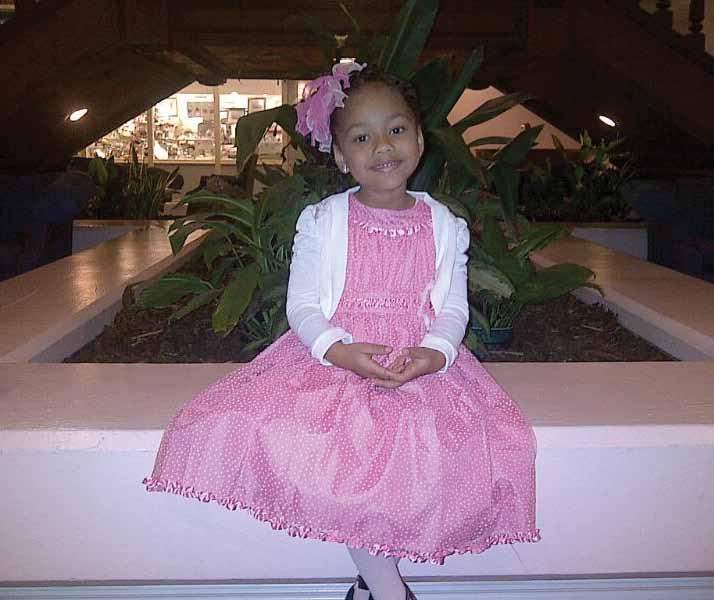


We welcome prospective families and are pleased to provide personal tours at your convenience. Our goal is to aid you in discovering whether MSA is right for your child. Come and see for yourself what MSA has to offer, not only in our classrooms, but also on our playing fields, gymnasium and labs. As you do, you will begin to understand why our graduates love MSA and go on to make remarkable contributions in a broad range of personal and professional endeavors. Application forms can be obtained from the MSA website at www.msa.bm or by contacting the School Office.
19 Dundonald Street West Hamilton HM 09, Bermuda Telephone: 441-292-4134
Email: msaoffice@msa.bm www.msa.bm
on graduating from Preschool may you have many graduations.more
Children do not come with an instruction manual.
That’s what parents are told when they bring their first bundle of joy home, and at first, they think – how is a tiny, adorable baby ever going to cause me stress! Once their little bundle of joy personality begins to emerge, those new parents will begin to wish their little bundle of joy were sent with clear instructions. In the challenging realm of molding, a tiny little person manages to hold the entire house hostage with a scream that seems bigger than life itself.
Parenting, needless to say, is an overwhelming process, and one of the most challenging parts is learning how to discipline your child. Hundreds of books have been written on this topic, with methods and skills varying across the board.

According to Rev. Dr. Ernest Peets, Pastor of New Life Church of the Nazarene, on the books Programme Coordinator for Focus and a Marriage and Family Therapist for The Counseling Center, the very word discipline can be taken from the Christian term, disciple, which simply means, learner. “What is my discipline teaching and what is it correcting?” Dr. Peets said, “The first question parents must ask when they are determining their own discipline style. “There is no real one way [of disciplining].”
However, while what works for one family may differ from what works in another family dynamic, there are important principals that are a must. “Parenting and discipline
require consistency,” Dr. Peets shared. Parents need to say what they mean and mean what they say, and always follow through. Threatening punishment and not following through can only lead to chaos in the home. It is also important that there is conversation between parents, and children and their parents. “Parents need to be on the same page as far as morals and values,” Dr. Peets stated. These questions should be discussed before couples marry, rather than waiting until after children are born. Also, parents must be a united front, in terms of discipline. Discipline requires both parents to be involved, as opposed to it always being one parent handling discipline. Kids can easily learn to play parents off each other, as one parent becomes the ‘friend’ and the other, the ‘villain’. This dangerous situation is even more likely in a co-parenting situation when children are moving between two households.
That consistency must also carry on through the years.
Sadly, some parents may give in to what Dr. Peets calls, parental exhaustion, and therefore become lazy in how they enforce discipline with younger children, compared with how they handled discipline for older children. Older children can then become angry with parents for what they see as, and rightly so, inconsistent standards in the home.
Children must also be included in discussion over acceptable and unacceptable behavior. If children do not know what the standard is beforehand, than it becomes that much harder for them to see consistency in discipline.
“There has to be some type of conversation between parents and children about right behaviours.”
Parents must also explore the possibility that discipline for one child may not work for another child. Different methods of discipline and different standards between children can cause unintended problems within the home. However, these differences must be explained, especially to older children, to help them understand why things may be different for one child in the family. “Children learn differently,” explained Dr. Peets, “and that requires me to make adjustments in my parenting. You need to find the right matrix to suit personalities.” This may mean trying to diffuse problems by providing children with other activities and outlets to prevent certain issues from arising.
One challenge parents may face is when their ‘good kids’ find themselves
in situations, like at school, where they are being punished for their misbehavior, as opposed to for their own poor actions or choices. These good kids can become angry at the situation, and even potentially ‘give up’ and go with the crowd, as opposed to continue to stand up and stand out for good behavior.
“You need to let him or her be heard,” Dr. Peets said.
“Just talking about it can keep the issue at bay, though it won’t resolve the situation.” He recommends helping your child develop coping strategies for dealing with such situations, like when it seems no one else in their class wants to cooperate with the teacher. “Let the kids come up with suggestions, and then test these. Role play the situations out to see if they’ll work.”
One of the biggest questions from the topic of discipline is the debate over whether or not to spank. “Is it right or is it wrong? I leave that to parents,” Dr. Peets shared. The problem with spanking is often in how it is done.


“A lot of spanking has been done inappropriately and out of anger. I caution parents to never spank out of anger. You need to be patient, listen and investigate first. Not doing so can violate trust.”
Another key aspect to parenting and discipline is parents realizing that they will make mistakes. “Learn to apologize to your kids. Apologizing doesn’t give up power – it’s teaching responsibility, taking ownership and making amends.”
For those parents in need of help, Dr. Peets recommends that a family’s first line of support should be from peers and family members – seek out friends with kids the same age, or friends whose children have already gone through the same or similar issues and find out what they would do or have done. The next level would be to seek advice from a pastor, a counselor or a social worker that has a good understanding of the issue, the child themselves, and the family background. Teachers can also be a good source in helping parents figure out what might work and what might not work in a situation.
Finally, especially if parents feel overwhelmed, seek professional help. “People should never be adverse to seeking professional help. When my car has a problem, I take it to a mechanic. When my child is sick, I don’t have a problem taking them to the doctor.”
For more information on The Counseling Center, visit www.betterrelationships.org.
“Learn to apologize to your kids. Apologizing doesn’t give up power – it’s teaching responsibility, taking ownership and making amends.”
rev.Dr. ernest Peets PHOTO BY InHArMOnY POrTrAITS
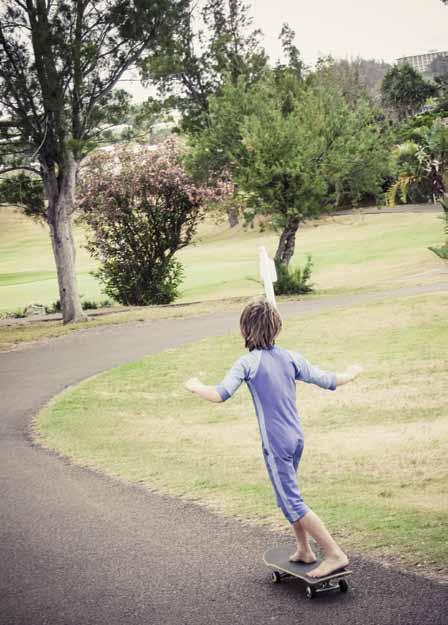
As parents we all want our children to be healthy. Keeping them fit and well-nourished aids their physical and mental development and improves their quality of life, thus making growing up a happy experience. But how do we encourage them to exercise and eat the right things without constant supervision and direction? The answer is simple – make it fun!
auniversal truth of life is children like to play. If we can find ways to position healthy choices as attractive and enjoyable rather than preaching about the benefits of being healthy, then we will be more successful in getting them to make healthy choices for themselves throughout their lives.
One way of making healthy eating more fun is to teach your children about where fruit and vegetables come from. Take a family trip to Windybank Farm or Wadson’s Farm and let them see how foods are grown and produced and even select some new things to try. Visit the local farmer’s market or one of the island’s many roadside vegetable stands so they can meet the people behind local produce. Explain how purchasing local products such as Bermuda carrots, sweet potatoes, and our tasty fresh Bermuda fish; are supporting their island home and keeping local people employed. We can also instill in our children a sense of pride about our locally grown seasonal items like loquats and cherries.
When deciding on family meals, involve your children in the process. Bermuda Dietitians Association have developed a handy Eat Well Plate illustration,
BY gwyneth rAwLinS, Customer Relations Specialist, the Argus Group BY Alicia resnik big kidsavailable online at www.eatwellbermuda.org, which you can use to teach your young ones how to put together a healthy dinner. Let them come up with ideas about which ingredients they want to use and then help them to search online for simple and nutritious recipes that include those items.
Another way of making healthy eating fun is to take an artistic approach to meal planning and preparation. For pre-schoolers, try using cookie cutters to create snacks and sandwiches in interesting shapes so they become more enticing.
Challenge your primary school age children to include as many different colours and textures of fruit and vegetables as possible on their plate as if they were painting a bright and colourful picture. You can quickly show them how a salad full of different ingredients
can be much more interesting to eat than artificially coloured sweet treats, which may be better marketed, but often lack taste and nutrition when you peel back their tantalising packaging.
With teenagers, the trick to promoting healthy eating is to link its effects to physical performance or appearance. Explain how food equates to fuel when it comes to sports and how foods can change our skin, weight and shape.
When it comes to getting your children to embrace regular exercise, try to demonstrate that there is very little difference between playtime and sports. Oftentimes for school children, timetabled sport lessons become something they dread and an unflattering uniform might make them feel self-conscious. So when the choice of exercise is removed, the fun factor is lost and exercise becomes synonymous with pain, misery and perhaps even peer rivalry. As parents, we need to work hard to keep the element of fun included. I’m sure we all have fond memories of running around a playground, climbing and sliding and discovering new skills, new heights and new friends. It’s important to harness the natural enthusiasm and channel it into other physical activities, as children get older.
Exercise should not be pitched as something children have to do. The trick is getting them to want to exercise on a regular basis. Therefore we need to observe what our children enjoy doing physically and provide opportunities that tie in with those activities. If they like going to the playground, then field games such as baseball, cricket, soccer, or hockey could be right for them. If they are into music, perhaps more artistic and expressive pursuits like dance, martial arts or gymnastics would be more appealing. Or, if they show more interest in skill-based games and activities, then tennis or golf might be more suitable.
To get younger children excited about exercise, try to come up with ways of moving their bodies that reflect the movements of a superhero, for example: Batman, Jumping Jacks, or Cat Woman stretches.
There are many organisations in Bermuda that offer summer camps. This can be a great way to involve your children in a particular sport and hone their athletic skills during a more concentrated period than is possible during the school term.
Summertime is also a great time to enjoy Bermuda’s waters – another way of combining fun and fitness. You could look into swimming or sailing lessons for your children so that instead of just splashing around at the beach, they can use their time in the water to get some exercise.
Organised team games are a great way to develop social skills while improving fitness. During the summer months, a beach Olympics day is a good excuse to get together with other families to get your kids’ hearts pumping and enjoy this beautiful island we call home at the same time.
On rainy days, games don’t have to mean sedentary activity. The Nintendo Wii was designed to get us moving as we play simulated sports like bowling and boxing. If you have the energy, you could even open up your home for a “Wii Just Dance” party.
Remember, your support is important to children of any age. Take an active interest in sporting achievements and support prize-giving and presentations as often as you can. Having a personal cheering squad can only motivate your child more.

Gwyneth Rawlins is a Customer Relations Specialist at the Argus Group and has worked for the company since 2000.
Ms. Rawlins has worked in the insurance industry for over 19 years, both locally and abroad. She is knowledgeable in medical and financial underwriting and has a wealth of experience in customer service and staff training. www.argus.bm



For students of all ages, summer can’t get here fast enough! while kids may be ready for a vacation—a change of pace—the opposite is true for their brain. the brain never gets tired of doing the one thing that it was designed to do: learn.
So, what happens in the summer when kids are not in school, and not providing their brains with the active intake of information that it needs to stay sharp? Well, like any muscle, it weakens, and it begins to forget.
According to Doyle Butterfield at Oxford Learning Bermuda, when students are not actively engaging their brains, neurological connections can begin to deteriorate, making it increasingly difficult to recall the information that was learned throughout the school year.

“Ask your kid today how to convert a fraction into a percent and he’ll tell you to divide the top number by the bottom and multiply by 100, but ask him again in July? Or at the end of August? You’re likely to get a blank stare,” says Butterfield.

Research into summer learning shows that students can lose up to 30 per cent of their academic skills over the summer break. This means that in the fall, students are actually further behind than when they left school at the beginning of summer.
Butterfield says that maintaining academic momentum over the summer prevents this backward learning slide, helps students remember the material they spent the school year learning, and keeps their brains in active learning mode so that they are ready to learn from the first day of school.
A few hours a week of academic work maintains important school skills. Mr. Butterfield recommends these tips to keep kids of all ages mentally engaged over the summer:
Read! Encourage kids to keep reading every day this summer. Frequent reading improves comprehension skills and develops vocabulary. Give that library card a workout!

Write! Give children a journal or scrapbook and encourage them to write every day. Stumped about what to write? Keep lists of new words, start a short story, or just summarize the day.
Talk! Make discussing your day part of your family’s regular routine. Chat about what you did, saw, or wondered about. This builds memory skills, and keeps the mind active and engaged.
Play! Games such as Sudoku, crossword puzzles, board games, or any game with strategy and planning keep the cognitive wheels working. Discuss strategy, alternative moves, and different outcomes.
Think! Keep the mind active by asking questions about anything and everything! Parents can model questions for kids. Don’t worry if there aren’t answers. An alert mind is always questioning and thinking.
Join! Enroll your child in a class at Oxford Learning. Flexible schedules and plenty of camp options mean that there’s a great way to keep learning this summer for everyone!
For more information about summer learning and summer programs at Oxford Learning, contact Doyle Butterfield at Oxford Learning Bermuda (441) 296-6060, Bermuda@oxfordlearning.com


BermudaScholarships.com, a not-for-profit service to the Bermuda community, supported by The Centre on Philanthropy, is the on-line resource for students looking for financial support for their university and college education. The website is a unique resource for students and parents looking for university and college funding.
• First, award providers register in order to create a profile for their scholarship(s) and review applications.
• Then anyone can use the website to look at all the scholarships offered every year in Bermuda.
• Students can then register to create their profile in order to apply for their selected scholarships.
Students and parents can browse the site to review the hundreds of awards offered each year which total in the many millions of dollars and then shortlist the scholarships that meet their educational needs and the award providers’ criteria.
To apply, students need to fill in their profile which becomes part of their application form. This includes:
• Photo – this should be a recent straightforward head and shoulders photo.
• Educational background
• Grade Point Average and exam results
• Tuition costs for the school/college they plan to attend
• Extra-curricular interests and hobbies
• Community service
• Work experience
Student then upload all the required files which will usually include:
• Letter of Confirmation from the Department of Immigration giving proof of Bermudian or PRC status.
• Documentation from the university stating their tuition fees.
• Academic letter of recommendation – from a current teacher if possible.
• Personal letter of recommendation – not a relative.
• Acceptance letter from college/ university - in many cases students will not have this letter when they apply for scholarships, but the award providers will need to have something tangible by the time the student is interviewed.
• Essay(s) – different awards providers often require an essay specific to their scholarship(s) and therefore the website allows students to upload as many essays as they need to. They can also ‘set privacy’ so that each award provider can only see the essay relevant to their scholarship. They need to make sure their essay is relevant to the subject outlined by the award provider.
Official Transcripts and Documents:
• Students at high school in Bermuda have their official grades and academic references uploaded directly to their profile by their school’s administration office. They have to give permission for their school to do this under the Files tab. This ensures that the entire process is secure and confidential and that each student’s private information will only be shared with the award providers.
• Students at schools and universities overseas arrange for their official transcripts to be sent directly to Bermuda Scholarships c/o The Centre on Philanthropy for uploading.
Check and double check the application including spelling – students need to treat their applications just as if they were sending in a hard copy application.
Once their profile is complete and all necessary documents have been uploaded, students can apply to the scholarships they have shortlisted by clicking on the ‘Submit Application’ button.
• An email will be sent to the student stating that the application has been received.
• There is no advantage in applying early – as long as student submits by the deadline their application will be reviewed.
The site also features many helpful resources for students, including tips on interviewing, how to choose the best educational path, and dispelling myths about why students don’t apply for scholarships. It also houses important information for parents and educators to help them understand not only the scholarship process but also how to apply and budget for a college education.
With such a wide variety of scholarship opportunities in Bermuda, the site acts as a focal point for those pursuing further education and as a practical tool for ensuring that the funds available to Bermuda’s students are fully utilised.
We interviewed Martha Dismont, Executive Director of Family Centre to learn more about what they are doing to support children and families in Bermuda.

BPM: What is Family Centre all about?
Martha: Family Centre is an internationally accredited Bermuda charity that exists to strengthen families and support healthy systems in order to achieve the best nurturing environment for children to live in and reach their potential.
BPM: What services does Family Centre provide?
Martha: Family Centre offers a range of services that prevent children from developing problems and responds to existing problems in order to help families become stable and strong.
BPM: How do you prevent children from developing problems?
Martha: We always try to be preventive but prevention is the primary goal of our community and school based services. We have general prevention strategies that reach large groups of people with opportunities and skills that strengthen them and enrich their lives. Our targeted prevention services reach youth who are facing adversity and need extra support to overcome challenges and thrive.
BPM: What are the general prevention services?
Martha: Our general prevention services reach more than 500 youth and parents per year. Those services include our Community Parent Education efforts such as parenting workshops and a parent peer support and advocacy group known as Family Forum.
The Family Forum group supports a social marketing strategy that distributes parenting tip sheets, which are distributed online and as educational flyers. We also provide training to approximately 100 youth serving professionals and volunteers each year
as part of our investment in strengthening children and youth.
Approximately 100 Students participate in the Beyond Rugby Bermuda programme, which is a partnership between Family Centre and the Bermuda Rugby Football Union. Youth develop fitness and self-discipline. They also attend our HSBC Homework and Study Academy, which helps to keep middle schoolers on track for high school graduation.
BPM: How do the targeted prevention services work?
Martha: We offer Intensive Parenting Groups on issues such as Parenting Through Separation and Divorce, Healthy Discipline, Relationship Building, and other family management topics. These occur in four session groups that include parents and children and offer dinner to encourage greater attendance. We provide afterschool groups to children and adolescents where they learn to develop healthy relationships, express feelings and develop new social skills with their peers.
Family Centre has a unique partnership with the Police. They support our Youth and Police Initiative and
the Youth Leadership Academy. These programmes build trust and bridges between youth and police in the North Hamilton community through the Youth Development Zone initiative. We have focused intensive effort in greater North Hamilton after consultation with the Police, Child & Family Services, and community agencies regarding the risks faced by youth.
BPM: People may know Family Centre best as the organization that provides counseling services for children and families. Is that still a significant part of your work?
Martha: Yes, approximately 300 families
Summer Fun Camps for
Session 1 - July 1-5 (FULL)
Session 2 - July 8-12 (FULL)
Session 3 - August 5-9
Session 4 - August 12-16
$300 per week ($200 siblings)
• Different themes each week
• $150 non refundable deposit at time of registration
Camp outline:
A daily, age appropriate ballet class in the School of Russian Ballet and American Ballet Theatre teaching styles. Acting class, ballet history, mime, makeup for stage, movies, arts and crafts. Daily swimming, rainbow yoga, French lessons and healthy nutrition workshops.
Register today to hold your young artist’s place in the camp! Camp sizes are limited.
“There are shortcuts to happiness, and dancing is one of them.”
Pediatric Service S
Neonatal Care
General Pediatric Care (Birth to 21yrs)


Routine Immunizations
School Physicals and Adolescent Care

No Referrals Needed a dult Service S
Internal Medicine Consultations
Specializing in Chronic Disease
Management: Diabetes, High Blood Pressure, High Cholesterol
Specializing in Obesity and Weight-Loss Management
Adult Appointments by Referral only
Associates in Integrated Health (AIIH) 44 Point Finger Rd, Paget, DV04 Bermuda Ph: 441-296-7296 | Fax: 441-296-7287

rely on Family Centre each year for brief and intensive counseling supports and other therapeutic services. We look to achieve several things with therapeutic services. We track child problem behaviours, academic improvement, parenting skill and the family’s ability to function positively. We consistently see an average 90% positive gain with these issues.
BPM: Do you keep track of the outcomes that your clients achieve in all services?
Martha: Family Centre uses that information to do quality improvement planning every three months. We are part of a group of human service agencies who work closely with the Bermuda National Standards Committee and we also help others to measure their outcomes and to improve services with the Youth Development Zone initiative.
BPM: We know that fundraising is challenging and it can be hard to get people to slow down enough to understand the needs involved in children’s issues. What would you like everyone in Bermuda to know about your work?
Martha: We believe that positive youth development is the key to creating a healthy and prosperous future for all individuals and society. When children are positively engaged in family, school and wholesome interests – they are not consumed by negative things like drugs and gangs. In order for children to give their attention to school and become contributing members of society, they must first feel safe and worthy. Family Centre has a track record of helping the adults to heal, organize and reprioritize so children can become successful.
Family Centre can be contacted at 232-1116


Our all inclusive summer camp will be held during the month of August on our 4 acre facility which includes a fully accessible playground, petting zoo, stables, nature reserve and an air conditioned activity centre.
The Explorers’ Summer Camp will be divided into two age groups, 5-8 year olds and 9-12 year olds, and will have no more than 25 campers per group. Our integrated camp is for campers of all abilities, whether they are children with or without special needs.


Campers will have the opportunity to explore aspects of Bermuda’s environment and history through fun hands-on educational and recreational activities. Some of those activities include adaptive sports, arts and crafts, music enrichment, water days, outings and petting zoo visits.


For more information please contact Erica Fulton by calling 238 2469 or emailing: efulton@windreach.bm

These days gluten free has become a household word and ongoing discussions are being carried out on whether or not one should eat gluten free. Many folks are opting to go gluten free for a number of health reasons. There is scientific data to support gluten is no longer connected to just celiac disease. Gluten sensitivity is affecting up to 40% of the American population according to the latest scientific research.
Some of the health issues associated with foods containing gluten are joint pain, depression, eczema, headaches, gas, bloating, diarrhea, constipation, skin rashes, high blood pressure, fatigue, brain fog, abdominal pain, obesity, thyroid imbalance and hair loss to name a few.

Dr. William Davis, a preventive cardiologist produced decades of clinical studies on health imbalances related to gluten sensitivity. Davis wrote the New York Times best seller Wheat Belly where he outlines his research alongside numerous case histories of persons who have transformed their lives and health by eliminating wheat from their diets. A research article published in The
American Journal of Gastroenterology concluded that gluten was a trigger for many people who were non-celiac. Gluten has also been linked to the sharp increase in Type 2 diabetes and obesity. Further research is released from the Foundation for Alternative and Integrative Medicine with regard to gluten sensitivity citing the symptoms of this debilitating disorder as often overlooked by doctors.
Dr. Jonathan V. Wright is a guest writer for the Foundation for Alternative and Integrative Medicine. Dr. Wright reveals that if you are suffering from an undiagnosed health imbalance or if you have been diagnosed with an incurable autoimmune disease,
you should consider getting tested for gluten sensitivity.
I have been experimenting with gluten free flours for the last year and a half and found that gluten free baked goods taste as good as, or even better in some cases than treats baked with flours containing gluten. I take pride in sharing my gluten free treats with friends and family and watch their reaction when they discover that they have eaten gluten free desserts. They cannot believe there is no compromise in taste. The usual expectation is a taste similar to cardboard, or that it would be a bland and unpalatable experience.
Gluten free flours are often made from gluten free grains, nuts, legumes and seeds. They can be found at local grocery stores and health food stores. There is usually a recipe or two on the back of the package for beginners. If you want to get really creative, search the internet for endless possibilities to creating gluten free desserts that will raise eyebrows.
Gluten free flours are high in
vitamins and minerals and the health benefits far outweigh their gluten counterparts. Gluten free flours are often organic which places them at the top of the whole foods chain for nutritional benefit.
Here is a list of 12 gluten free flours along with a brief explanation on the health benefits of each one.
• almond Meal/Flour helps to lower cholesterol levels and is loaded with potassium, iron, magnesium and calcium.
• Coconut Flour is made from finely ground coconut. Coconut flour is a low carbohydrate, low glycemic, high fiber food.
• Chick Pea Flour is often used in place of white flour. Chick Pea flour is rich in protein and fiber.
• Flax Meal/Flour is a powerful source of Omega 3 fatty acids. Flax meal helps to balance nutritional needs and is easily blended with other flours.
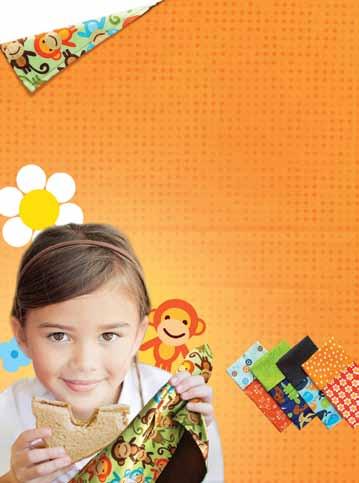
• amaranth Flour delivers a silky

texture along with a nutty, buttery taste to baked goods, waffles and pancakes. High in fiber, zinc, iron and calcium, Amaranth flour compliments any dessert while meeting nutritional needs.
• Buckwheat is bursting with folate, magnesium and potassium. This grain is known to relax muscles, improve blood flow and lower blood pressure levels.
• Oat Flour is considered a heart healthy, cholesterol reducing food. Please note that while some persons living with celiac disease and gluten sensitivity are not affected by Oat flour in baked goods, others are unable to tolerate the grain. Oat flour blends well with other gluten free flours and is an excellent replacement for white or wheat flour.
• Millet contains phosphorus, magnesium and manganese. Phosphorus is important for repairing body tissue and encouraging healthy cell growth. Millet is a prized grain in
China, Africa, India and Greece.
• Quinoa is packed with 9 essential amino acids and has three times the amount of iron as regular flour. Quinoa flour is a healthy alternative to gluten flours and works well in pastries, muffins and other tasty baked treats.
• Sorghum is another excellent alternative for wheat based flour. Sorghum contains several nutrients needed to maintain good health.
• Brown Rice Flour is rich in insoluble fiber. Brown Rice flour aids weight loss, regulates blood sugar levels and contains a high level of B vitamins.
• Cassava Flour boasts important minerals like copper, potassium and zinc, along with vitamins b6 and vitamin C. Cassava flour is low in fat and rich in fiber and carbohydrates. An energy bar made with Cassava flour may be beneficial for muscle recovery after a vigorous exercise program.
I’ve heard it time and time again – it’s impossible to buy good, healthy food in Bermuda on a budget. Sadly, it’s a very wide-spread misconception. “Affordability is a moot issue,” explained Chef Joe Gibbons “We have to eat, so there is no option on not buying food.” The issue comes with families learning how to buy and cook healthy food. “Fresh is better than processed and, in reality, takes only a few minutes more to prepare.” Organic foods, espe-

cially produce, have definitely come into vogue, but is it really much of a difference? Is it really better for you?

“The short answer is, not much,” Chef Gibbons said. “Organic takes the process of fresh a little further – usually about insecticides – but from a nutritional point of view, there is no difference. Local farming, or the 100mile radius concept, is a better judge.
In Bermuda, fresh is always better than most imported. Many people also consider the fuel costs to import, which can far outweigh any environmental impact of eating organic.” But buying fresh seems to be so expensive, how can one still buy fresh, local produce without the cost? “Farmers may well sell certain of their produce at better rates than the store, directly from the stands. However, a lot of what you see at stands is also imported, so be wary, or ask the farmer. Local fresh produce is usually better, but growing your own is the best alternative, and eating what is fresh at the time.” However, sometimes even common items are unavailable, and so Chef Gibbons recommends frozen as the next best option. “Frozen fruits are very good and nutritious. Canned fruits are often in a lot of sugar syrup, however you can also find them in regular, un-sweetened juice – look at the label on the can. Frozen berries and peaches are worth buying. Fresh fruits tend to be expensive, so frozen are good because there is no waste.” Of course, locally grown fruits – bananas, citrus, mangoes – are the best choice, and are often best purchased from farm stands in season.
Another big cost in the grocery budget is meat, but knowing which cuts to buy can definitely help in keeping those meal costs down. “Meat prices can vary from store to store. It is the norm in most stores to have available in the cases meat products which take almost no cooking skills – steaks, small cuts, and so on – but these are expensive. Alongside the steaks, you will find things like brisket, flank and maybe even tri-tip. These will be less expensive meat options. Lamb is always expensive, but
pork is a good buy, like chops and roasts, but oddly, many Bermudians don’t eat it. Chicken is popular, but fresh chicken is expensive. Look for frozen meats – whole chickens are the best value. Oxtails, stewing beef, goat, pork chops, pork fillets – all are better value than fresh, but do require a little skill in pulling together. Though, once an item is defrosted, it can be cooked in a short period.”
“Always keep legumes on hand,” Chef Gibbons said. “They are cheap and easy. They do require time to soak and cook, but are well worth it. For shorter cooking times, use a pressure cooker.” Other healthy choices include brown or jasmine rice, whole-wheat pastas and canned seafood, like tuna, salmon, sardines or smoked oysters. Learning new cooking techniques and skills can also help greatly in preparing more healthful meals for your family without the cost. “That’s the problem. If you don’t know how to cook, prepared foods and take-out are the only options. Prepared foods are full of bad things, which make them tasty, like lots of salt and chemicals. The cheaper the prepared food, the worse it is. They are very bad for kids, in my view, with way too much sugar and salt. You are better off making an omelet with a salad, or even toast for dinner than some of these frozen dinner products! You don’t save money! More effort has to be made to both teach parents how to cook and educate them with recipes.”
Sadly, there are not many options for learning to cook in Bermuda. There are a few courses available through the Bermuda College, as well as courses offered through the Community Education and Development Programme, “but they are not however usually directed to topics like healthy cooking or affordable cooking,” Chef Gibbons said. “Online searches are the best ways to turn up recipes.” Some great sources online to find easy and healthy recipes include websites for TV shows like The Chew (TheChew.com) and Rachel Ray (RachaelRay.com), as well as sites like Cooking.com, AllRecipes.com and even on Pinterest.
In Bermuda, fresh is always better than most imported.

With approximately one third of Bermuda’s school-aged children either overweight or obese there isn’t a better time than now to start promoting a healthy lifestyle before the problem gets worse.

And those extra pounds can put children at risk for some serious health problems –often for life. Type 2 diabetes is one of the biggest risk factors in overweight or obese people and is prevalent in Bermuda. The disease seems to be occurring in patients who are younger and younger. Obesity can also have an impact on children socially and emotionally, and many overweight and obese children are likely to become obese adults, continuing the very dangerous cycle of poor health.
According to the Department of Health, the terms overweight and obese refer to a child
weighing more than is expected for their height, but also the amount of body fat.
But we as adults can begin healthy habits that will last a lifetime even before the birth of our children and begin to combat what is becoming a very real problem in our community.
“I believe that parents can prevent this problem from happening to their child by creating a culture of health in the home starting from pre-pregnancy and continuing all along the developmental stages of a child’s life instilling the importance of health while practicing the same,” says Public Health Nutritionist Mellonie Furbert from the Department of Health.
From early on parents are the examples that their children will model in many areas, and leading by example by eating healthy and keeping active is the beginning
of a healthy lifestyle for their children.
“If parents lead or model a healthy lifestyle for their children, children are more likely to do the same,” advises Marie Beach, the Department of Health’s Healthy Schools Coordinator.
While children will follow their parents’ lead, adds Ms Furbert, she also believes encouraging a healthy lifestyle needs to be a community-wide effort.
“The blame belongs on all of us in this Island and it requires all of us responsible to repair it – from the media, government and policy makers, businesses, schools, churches, and parents.”
Some parents are struggling and many believe the necessary solutions are overwhelming, she says.
“If parents are to be successful in addressing the overweight issue in their





home, they need support in the community environment,” Ms Furbert says. “A culture of health breeds healthy people in a healthy community.”
So what can be done to encourage healthy lifestyles both in the home and in the wider community?
“The Department of Health with Healthy Schools does not suggest placing children on ‘diets’,” explains Ms Beach, “but promotes a holistic healthy lifestyle that includes not only healthy nutrition, but also daily physical activity, sufficient sleep, drinking water, being emotionally healthy and having spiritual balance.”
Steering clear of packaged, highly processed food and instead serving whole, fresh options while maintaining healthy food portions, is a great start.
“Oftentimes, we may be trying to reduce the amount of food and fats we eat, but continue to eat too much,” says Ms Beach. The Department of Health has devised a new EatWell Bermuda plate to illustrate the foods as well as portion sizes that are appropriate for children. The image can be printed off the Department’s website at www.health.gov.bm and put up on the fridge to help get a visual idea of how much adults and children should be eating.
“The plate will provide adequate guidance about both portions and food groups,” says Ms Beach. “Parents can provide their child with fresh or canned fruit in natural juice, dried fruit, or yogurt for recess. Avoiding such high-fat, high-salt and high-sugar foods as pre-packaged lunches and providing healthy home-cooked meals for school lunches would be a healthier choice for children. School lunches can include leftovers from last night’s dinner, sandwiches, cheese and crackers, yogurt, vegetables with healthy dips, two to three graham crackers or vanilla wafers, milk and water. Beware of pre-fried, frozen foods such as chicken nuggets
and chicken tenders. Making them fresh from scratch at home would be healthier, if they are baked and not fried,” she explains Another important component of a healthy lifestyle is physical activity. Children should be physically active for about an hour a day – so encourage your children to get outside and explore. Physical activity doesn’t have to be an organised sport, but something as simple as taking the dog for a walk, gardening or even hanging the laundry!
“Families can expose their children to more family time and Bermuda’s beauty by having everyone walk or ride their bikes on our Railway Trails and beaches,” adds Ms Beach.
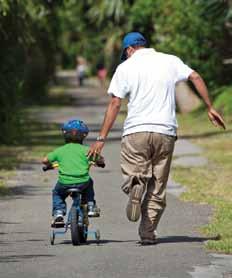
Introducing new ways to get active can be fun for the whole family, including trying out yoga, martial arts or using exercise DVDs together.
For more tips and advice on healthy lifestyles, including meal planners and shopping guide for parents contact Nutrition Services at the Department of Health on 278-6467 or 278-6468 or 278-6469.


Child sexual abuse is much more than physical abuse. While physical abuse is recognizable sexual abuse is just as detrimental to a child, such as fondling, touching, exposing children to pornography and attempted rape; also can leave deep, emotional, lasting scars. The quicker one learns the facts about child sexual abuse, the quicker you can prevent it. The sooner we talk about it and get involved the better. “These are some of the founding principles of SCARS (Saving Children and Revealing Secrets).” According to Bermuda’s Child & Family Services, the reported instances of child sexual abuse have been increasing at an alarming rate.
We have to dig deeper and understand sexual abuse,” founder and executive director of SCARS Bermuda Debi RayRivers stated in our interview on recognizing child sexual abuse. SCARS Bermuda focuses on prevention, awareness and training. Their mission is to reduce the risk of child sexual abuse and to be an advocate and voice of sexually molested children and their affected families. Debi Ray-Rivers has been sexually abused and wants those to understand the importance of the issue and how it will affect the victims and their families. Ray-Rivers is a trained facilitator with the Darkness to Light Organization whose mission is to
empower adults to prevent sexual abuse.
In order to reduce the risk of child sexual abuse, “We need to teach our children how to protect themselves by knowing the issue at hand.” This will give children the confidence to say NO, if the issue ever occurs. Sexual abuse is power extorting over another and being able to stand strong against the perpetrator is a step towards preventing sexual abuse. “Child sexual abuse does not discriminate.”
Some research in the United States has shown 9 years old is the median age when children are sexually abused. Children are afraid to tell what happened to them especially in the case of sexual abuse, which makes it difficult to provide the exact number of sexual abuse cases.
“88% of abuse is never reported.”
SCARS Bermuda is a registered charity formed to create greater awareness of the devastation of child sexual abuse. Through the Darkness to Light Stewards of Children Training Program, they provide training to individuals and organizations entrusted with children to prevent, recognize, and react responsibly to child sexual abuse.
“I encourage all parents to become certified in the Darkness to Light Stewards of Children training so that they can learn how best to protect their children from child sexual abuse,” says Ray-Rivers.
By doing the training, you will be prepared to teach your children how to protect themselves to prevent sexual abuse. “We teach our children how to apply sunscreen from getting sun burned, we teach our children how to look both ways before crossing the street so they can avoid getting hit by a car, and we make sure their seatbelt is fastened in vehicles to ensure safety.” It’s the same scenario in teaching your children about sexual abuse. SCARS Bermuda provides access to resources to promote the healing process, if sexual abuse does occur.
Recognizing child sexual abuse is noticing the warning signs that cause a concern which doesn’t necessarily mean that your child has been molested, but it presents awareness in being alert of the issue; such as younger children imitating adult-like sexual behaviors with friends, siblings, toys or stuffed animals or older children refusing to talk about a SECRET shared with an adult or older child. These two examples of warning signs are just a few of many suggestions in being alert before it happens.
According to SCARS Bermuda, it is important to keep in mind that sexual abuse does not only occur in by an adult but also involves young perpetrators and some research indicates that 40% of abusers are older children. A majority of these children and young people have been sexually abused themselves or are being sexually, physically and/or emotionally abused.
Another aspect in recognizing child sexual abuse, before it happens, is inappropriate behavior shown by adults or older youth with younger children. If you notice adults having more relationships with younger children than other adults than there is a problem. Once you understand how to recognize child sexual abuse you can then protect your child and make them aware of the issue. “God did not intend his little ones to be harmed.”
After realizing the warning signs, we must protect, love and believe our children if sexual abuse is to ever occur. Research shows that 50-60% are abused by people the family trusts. This is a serious situation, as we know our lives are centered around those we trust. Even if we don’t want to admit it, we must be cautious of everyone who’s around our children. If a family member were to abuse our child, we must address it. We can not be afraid to report it to the necessary authorities and seek professional help for your child and family.
Ray-Rivers states, “If we don’t report it, we are an accessory to the crime.” This should convince us to do the right thing and understand that sexual abuse is not okay and should be taken with much consideration.
“We have to hold each other accountable. This is not a witch hunt, this is protecting children and making parents
aware of child sexual abuse,” says Ray-Rivers.
Be prepared to ask questions like, “Has anyone ever touched you inappropriately or asked you to touch them inappropriately?” These questions may seem uncomfortable but they must be asked. Child molesters deny their actions and manipulate their victims from believing what they are doing is wrong.
SCARS Bermuda can train those who want to prevent, recognize, and react responsibly to child sexual abuse. Through generous support and corporate donations, this training is offered FREE.
SCARS would like to thank their volunteers, donors, and charity members because without them they would not be successful today. You can find more information about their monthly training on their website at www.scarsbermuda.com” www.scarsbermuda.com. If you know someone who has been sexually abused, please report it to the Department of Child and Family Services or the Bermuda Police Service.

Identification: Flying ants are often confused with winged termite swarmers but their wing size and body shapes are different.
Bermuda summers - warm and humid - bring out flying ants as well as flying termites in order to mate and establish new colonies.
Flying ants are simply ants with wings; flying termites are termites with wings. Both are the male and female reproductives of their colonies, but are two very different insects.
1. Flying ants can be readily identified from termites by three main characteristics.
2. Their rear wings are shorter than their front wings Flying termites have equal sized wings

3. Winged ants have bent antennae; winged termite antennae are straight.
All winged ants have hourglass shaped bodies with a thin waist (like all ants) as opposed to the solid-looking body of winged termites.
When winged ants swarm in your house, their colony is likely to be located in an undisturbed area, hidden in places such as behind water heaters, refrigerators and stoves, or under the house, between wooden floors, and in electrical or pump rooms. Window and doorframes are also favourite nesting spots, especially if poorly caulked. Rotting wood is often teeming with thousands of ants.

Argentine ants are the most prevalent nuisance insect pest in Bermuda, with our moderate climate, rich soil, and porous limestone. They are especially aggressive when foraging, and each colony can connect and co-mingle with other colonies. They follow the trail of
earlier ‘scouts’ who were inconspicuously checking out your house for the rest of their colony. Although ants prefer outdoors, they readily enter houses searching for - and finding - food and water. They especially like sweets: sugary liquids such as sodas, fruit juices, and syrup, but go after proteins as well: fish, chicken bones, eggs, dead mice and insects. Preventative treatments around windows and doors are useful, and there are homemade bait recipes that with some persistence can be effective. Aerosol fogging with ‘bug bombs’ is never recommended for ants or termites, as it is an unnecessary exposure of chemical to you, and quite ineffective in giving any lasting results. Do not use baits and sprays in the same area, as ants will not feed on contaminated bait. Long lasting control of ants is difficult because the ant colonies are everywhere, and often cross multiple properties. Nesting sites are often protected under patio stones, outdoor furniture, along pool decks, in lawns and flowerbeds and almost anything stationary outdoors. Some areas will probably need regular treatment if the ant populations become overwhelming.
Like ants, Bermuda’s termites live in colonies. A pair of “flying termites” mate and start a new colony with the new queen laying hundreds of eggs. The hatched termites form wingless workers that cause the damage to the wood, and when fully mature, they become either soldiers or additional reproductives. The soldiers defend the colony from attacking ants. The reproductives develop wings and fly out in swarms all across the Island from their colonies, usually around mid-June, and again in September. They then shed their wings, mate, and start new colonies.
Ants often swarm at the same time of year as termites do, so it is quite important to be able to tell the difference between ants and termites.
Usually, the first sign of a termite infestation is the presence of wings and fecal pellets - often called “eggs” in error. The pellets are actually digested wood which are pushed from small holes in the woodwork. Many Bermuda homeowners find only the wings, and mistakenly believe that the termites have gone. The flying swarmers are attracted to light and can also enter homes from outdoors. To confirm an infestation, search for termite wings in light fixtures and window sills, as well as scatterings or piles of their “pellets”.

For over 60 years
Bermuda Pest Control has been preventing and eliminating pest problems for local families. So even though pests are a problem, we’re the ones to help you deal with them. Our most popular
household treatments are on a monthly schedule, but we’ll meet your scheduling needs with bi-monthly, quarterly or even annual treatments ... whatever is best for you.
Bermuda Pest Control uses only genuine Vikane brand gas in our Termite fumigations, the only product backed by more than 50 years of university research, practical use and published reports. Whole-structure treatment with Vikane gas fumigant is the only proven type of treatment, with more than 45 years of local use, that we know from experience is effective. Telephone BDA-PEST (232-7378)
Walter Saul is Operations Manager of Bermuda Pest Control Ltd. and a licensed fumigator, both in Bermuda and in the United States. He is the island’s longest serving fully licensed fumigator, and has been in the pest control profession for 35 years.
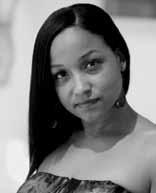
My most memorable summer activity with my children was in August 2006. My immediate family and I, including my sister and her children, spent the first week in August on a Caribbean cruise and the second week in Florida.
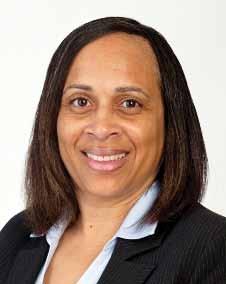

This particular family vacation with my children was one of my most memorable because we were able to spend time celebrating 140 years of life honoring their great grandmother, Alice Bean, who turned 80; and their grandfather, Milton Bean, who turned 60.
We took a family tour to the famous Sticky Wicket Cricket ground and had my children’s great grandmother’s and grandfather’s celebratory birthday dinner on the boat. We also enjoyed rollerblading on the top deck as a family.
While in Florida, my son, Micah and mother, Naomi Bean, celebrated their birthday at the Outback Steakhouse on the same day. The highlight for our stay in Florida was visiting the Green Meadows Petting Zoo. We went on a hay ride, milked a cow, caught ducks, chickens and geese, and saw a Zorse (an animal that was bred by mating a zebra and a horse).
This family summer activity created memories my children and I will always treasure.
I am fortunate enough to have many memorable summer moments with my son. He loves the beach, and the water, and has very little fear when it comes to that. I am not quite so adventurous! One of my favorite moments was when I realized that my son understood my fear of the water, and became “the leader” in our adventures in the water. He took my hand and said “Mommy – it’s ok –there is nothing to be scared of, they are just fish and are more scared of you then you are of them”………So as we snorkeled he found it very funny to hear the noises coming from my snorkel – but never once let go of my hand. A similar situation happened while visiting Orlando one summer, when he was quite young he showed his desire for me to ride the “Rock and Roll Roller Coaster” at Hollywood Studio’s. I am NOT a roller coaster person but after much persuasion I was convinced to do it. We held hands and he was absolutely delighted to see the fear on my face….. This roller coaster goes from zero to 60 in 10 seconds and goes upside down three times! He was extremely proud of me….. Now each time we have been back to Orlando we go on it at least three times. I won’t say the same for snorkeling!
While flying to Miami with family and friends, we had to wait for our connecting flight. My husband and friends went for food while I relaxed. When they returned, something wasn’t right … I looked around and someone was missing… MY SON! “Quincy,” I said calmly, “where is our son?” He replied nonchalantly, “I don’t know. Wasn’t he with you?” Now, a BIG lump was in my throat. I stood up and screamed “EVERYONE BE QUIET!” The whole area in the airport went silent “I CAN’T FIND JAQUARI!! YOU ALL BETTER GET UP AND START LOOKING RIGHT NOW OTHERWISE I AM SHUTTING DOWN THIS WHOLE AIRPORT AND NO ONE WILL BE GOING ANYWHERE! I AIN’T JOKING!!” Someone started snickering and I threw them a very dirty look… I was vexed!! He was only 4 at the time. I had everyone in panic mode. I was telling security to put the airport on lockdown, when out of the corner of my eye I see my son bouncing along with his godfather! Apparently, he took Jaquari to watch a plane take off and they were sitting on the floor out of sight! Once my son gave me a big hug, the anger subsided. This is my most memorable moment because I felt that “Lioness” like protective mechanism inside of me. I wanted to protect my son at all cost.





Summer has arrived and many of you will be enjoying your National Parks over the upcoming holidays. We want to emphasize that swimming at the beach can be extremely fun however beach patrons must be prepared and sensible whenever in or near the ocean.

Who is at risk for drowning? Everyone. However, children have the highest risk for drowning worldwide. Risks include inadequate supervision, inability to swim, and unrealistic expectations of children by guardians regarding water safety. Be safe and make good judgments about your beach activities this summer.
The WaTer SafeTy Code Spot the danger
• Are Lifeguards on duty at your beach?
• Know the general beach conditions: are there high surf conditions, is it shallow enough to stand, is it deep enough to jump, are there rip currents or any other currents, what is the tide like, is it busy?
• Are there any dangerous marine animals present such as Portuguese Man-of-War?
• Are there any boating (including personal watercraft) activities near your swimming area?
• Even if you are only near the water, take extra care.
Take Safety advice
• Choose swimming areas where there is Lifeguard coverage.

• Know the weather forecast before leaving home.
• Make note of any warning signs or safety flags at beaches. don’t Go It alone
• Never swim alone.
• Children must always have direct and close adult supervision while in or near the water at all times. Learn how to help
• Do you know what to do in an emergency?
• Shout for help and alert a Lifeguard.
• Telephone emergency services (911) if there are no Lifeguards present.
• Do not enter the water to rescue someone unless trained to do so.
• Take in a water safety workshop and get certified in CPR & First Aid to be part of the solution for a safe summer at the beach.
These areas are marked by large orange buoys and NO marine traffic including personal watercraft is allowed in these areas at anytime. These areas include Clearwater and Turtle Beach, Coopers Island Nature Reserve, Shelly Bay, Admiralty House Park/Clarence Cove.
rememBer - Slip on a shirt. When out in the sun, wear protective clothing of tightly woven fabrics that you can’t see through when held up to the light. Slap on a hat. Have fun choosing one and make sure it protects your face and back of your neck. Bucket shaped hats are great for kids. Slop on sunscreen. SPF30 or higher, apply everyday 30 minutes to one hour before you go out. Dry and re-apply every 2 hours if possible, especially after swimming and exercising. ALWAYS BE CAREFUL BE SAFE THIS SUMMER
The Cup Match Holiday is a very busy time for camping and picnicking at the Government parks and beaches. Therefore, the Ministry of Environment and Planning in conjunction with the Department of Parks, have established a few guidelines for those who wish to camp outside the 3 designated campgrounds - Ferry Point, Chaplin Bay and Higgs & Horseshoe Islands. The major reforestation and environmental project at Coney Island is still ongoing. Therefore the park is CLOSED to camping. It will be restricted to picnicking only.
There will be NO CAMPING at Blue Hole Park / Nature Reserve or Coopers Island Nature Reserve at the old NASA site. There is also NO CAMPING on the DUNE immediately behind Jobsons’ Cove in South Shore Park. This dune area has rare sensitive plants that need to be protected. There is a sign erected advising park users of this policy.
no tents or ropes to mark spots are permitted to be erected on monday 29th July 2013. Tents and ropes found erected at the parks and beaches on this date will be taken down by the Department of Parks. Campers may erect tents and tarps on Tuesday 30th July 2013 to secure their preferred spot. However, no one will be permitted to camp on this date. Please do not erect tents in front of the park and beach access gates. Camping WILL be permitted from Wednesday 31st July until Sunday 4th august 2013.
Park gates will be opened during the day on 31st July 2013 to allow campers and picnickers the opportunity to set up. Park Rangers will be on duty until 10 p.m. Wednesday 31st July 2013 and will begin locking the gates at 9:30 p.m.

For the safety of park users, ALL vehicles must be removed from the parks and placed in the designated parking lots.
Park rangers will also be on duty both days of Cup match, Thursday 1st august and friday 2nd august 2013, from 9 a.m. until 7 p.m. and the weekend Saturday 3rd august and Sunday 5th august 2013, from 9:30 am to 6 pm to assist park users.
Lifeguards will be on duty at Clearwater Beach, Turtle Beach, John Smith’s Bay, Horseshoe Bay and Long Bay at Coopers Island Nature Reserve from 10 am to 6 pm. throughout the holiday period.
The following beaches have safe swimming zones designated by buoys where boats and personal watercrafts are not permitted to enter; Clarence Cove at Admiralty House Park, Shelley Bay, Clearwater Beach, Turtle Bay, and Long Bay at Coopers Island. Operators of vessels are asked to adhere to these safety zones.
The Department of Parks maintenance crews will also be working from 6:00 am until 3:00 pm. both days of the Cup Match Holiday, as well as the weekend, to collect trash, rake beaches and clean toilets. Access gates must be kept clear at ALL times.
We ask the owners / drivers of vehicles to please use common sense and DO NOT PARK in front of the access gates. They must be kept clear so that Department of Parks maintenance vehicles and Emergency vehicles, including Police, Fire, and Ambulance can gain access at ALL times.
Offending vehicles will be ticketed, clamped and towed at the owners’ expense in order to clear the blocked gates.
In addition there are private residences at John Smiths Bay Park and the access road must be kept clear for tenants.
aLL CamPInG eQUIPmenT mUST Be remoVed from The ParKS and BeaCheS By monday 5th aUGUST 2013. aLL
eQUIPmenT Lef T af Ter ThIS daTe WILL Be ConSIdered aBandoned and WILL Be dISPoSed of By The deParTmenT of ParKS.
The cooperation of the general public during the busy 2013 Cup Match Holiday would be greatly appreciated by the staff of the Department of Parks. In addition, please be considerate and respectful of your neighbours, including those who stay adjacent to the parks and beaches. Music must be played at reasonable levels that will not disturb other park and beach users or residents.
For further information please contact the department of Parks, Park ranger office at 236-5902 or 239-2355.
The Minister and the Permanent Secretary, of the Ministry of Environment and Planning, and the Director and Staff, of the Department of Parks, wish the general public a safe and enjoyable 2013 Cup Match Holiday.
The Department of Parks is informing stables, horse owners, handlers, and the general public that the 1988 Bermuda National Park Regulations under the jurisdiction of the 1986 Bermuda National Parks Act will change regarding horses on the public beaches.
The regulations are as follows:
• As of the 1st May 2013 until the 31st October 2013 horses are NOT PERMITTED to be on any beach in South Shore Park ( inclusive of the following beaches; Horseshoe Bay, Peel Bay, Butt’s Beach, Wafer Rocks Beach, Chaplin Bay, Stonehole Bay, Jobson’s Cove and Warwick Long Bay) Johns Smith’s Bay, Elbow Beach and Shelly Bay.
• From the 1st May 2013 until the 31st October 2013, owners and handlers of horses may take or ride the horses on all other public beaches with the following restrictions; owners and handlers can ONLY take or ride the horses below the high water mark between the hours or 5:00 a.m. and 8:00 a.m.
• Horses can be on the trails and dunes in South Shore Park at any time. The cooperation of stable owners, as well as horse owners and handlers, in abiding by the 1988 Regulations, is greatly appreciated.
1988 Bermuda National Park Regulations

The Department of Parks is reminding dog owners, handlers, and the general public that the 1988 Bermuda National Park Regulations and Policies under the jurisdiction of the 1986 Bermuda National Parks Act have changed, regarding dogs in parks and on the public beaches.
The regulations and Policies are as follows:
• As of the 1st April 2013, dogs are NOT PERMITTED to be on any of the public beaches until the 31st October 2013.
• Dogs can be walked either on the trails, in Parks or on the dunes, in South Shore Park at any time.
• The dogs must be on a leash at ALL times.
• As a reminder dogs are NOT PERMITTED in the Main Show Ring in Botanical Gardens. Signs are erected informing the public of the closure.
• Members of the general public are reminded that Botanical Gardens is closed to the public at sundown each day.
• For health and safety reasons dogs are NOT ALLOWED on the playgrounds at Clearwater Beach, Mullet Bay Park, Shelly Bay Park, Parsons Road, Admiralty House Park, Warwick Long Bay, Somerset Long Bay and Death Valley.
• Dogs are also NOT PERMITTED in the new Coopers Island Nature Reserve where the NASA Tracking Station was located. The cooperation of dog owners and handlers in abiding by the Regulations and Policies is greatly appreciated. 1988 Bermuda National Park Regulations
If further information is required please contact the department of Parks at 236-5902.
“There be Monsters” is a warning, can be seen on old maps, for places that were unexplored by man before the World was fully mapped, the classic fear of the unknown stigma. Fact of the matter is there are not any monsters, just myths to scare.
Having practiced for over 20 years in the Criminal Justice system I have, both in Bermuda and in other jurisdictions, dealt with far too many cases of child abuse, abduction and most tragically, murder. These are unspeakable crimes that are obviously, a parent’s darkest nightmare.

Sadly, despite the early lessons that we teach our children about honesty, sharing, good behavior, we tend to shy away from or do not always consider the conversation about “strangers”. This is a simple statement of fact given the clear evidence of the number of children that are lured away, sometimes to their doom, by the promise of a candy bar, puppy or a new toy.
A few years ago, my now strapping 6ft 1inch 15 year old son was walking home form the grocery store 500 yards from our house carrying a bag with a loaf of bread in it, when a car pulled up beside him with a kind gentleman asking him if he needed a ride?
“No thanks” said my then 11 year-old, “My dad is waiting for me on the corner.”
The man drove a way.
I was in New York on business at the time.
My son went right home and told my wife who called a friend in the police with as much detail as she could gather. Perhaps it was a kind man asking my blonde, blue eyed boy with a small bag of groceries, likely walking with the usual spring in his step, near his home on a sunny day, if he needed a “lift.” But perhaps not…
The point is, his answer was the right one and most importantly it was the type of answer that we had schooled him on since he was a young boy on the following basis:-
1. There ARE MONSTERS, they just look like adults and you just cant tell by looking at them!
2. The Monsters are often strangers (sometimes they’re not but that is another topic!) and will try and trick you to go with them by offering you something nice or fun. That’s the trick!
3. No stranger can give you anything that Mommy or Daddy can’t. So just come and ask me for it instead of going with them!
4. The stranger might be a Monster and might be mean to you! Don’t ever go with them!
You have to feel your way, I didn’t start these lessons by showing my kids crime scene pictures or giving the horrible details I have been exposed to. I started, young, just like the other lessons, by making them aware!

Simple things, like if you are at an Amusement Park and get separated from your child tell them to stand right where they are, don’t go with anyone, just wait right there, Daddy will come back to the place he last saw you! (Have had this happen a couple of times like many of us, the most agonizing seconds of your life!)
Many a nightmare has unfolded with the Monsters spotting the lost child and offering to take them to the parent. (By the way, lions don’t wander around in the North Pole, there’s no gazelles there, so don’t ever feel your child is somehow completely safe in a place like an Amusement Park etc.!!!) The classic ruse occurs in crowded places like parks and bus stations where someone calmly walks away with a child pretending to be the caring, helpful Good Samaritan! Three minutes (that’s an accepted time for any abduction!) and your child could vanish!
This is a delicate lesson, we obviously don’t want children growing up believing that every adult is a monster, however, the old adage of “don’t talk to strangers” has merit. I took the view that it was a good idea to explain why and give them some strategies for dealing with strangers.
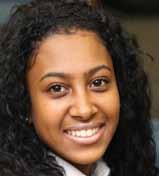
My son was polite, told a clever lie that I had given him and walked calmly away. Running might have made him like a gazelle to the lion, or may have insulted and hurt the feelings of a well-meaning stranger simply offering a little boy a lift. Either way, no one got hurt in anyway, especially the child!




Be aware island folk, whilst we need to perhaps be more vigilant with our
children when travelling, the monsters are about even in our little Island home and harmful things happen to lured in children (that includes everyone under 16!) every year, right here!
In this day and age pedophiles are a potential threat equal to the ocean, the stray dog, the fire, the high cliff, the road and all the dangers we have



no difficulty in teaching our children about. “Don’t talk to strangers” is easily forgotten when a toy or a puppy is involved with a kindly face, smiling “monster” that looks just like any other adult. Find the right way for you to teach your children this valuable lesson, if the foregoing helps then please make use of it.
When Rampaul Williams’s daughter was a baby, he was sure she was a beautiful, healthy child. As she got older, he continued with that belief. It wasn’t until she attended preschool that something changed.
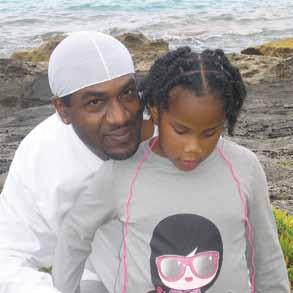


Se’Arie is a six-year-old girl who has autism. She was diagnosed after a preschool teacher pointed it out to her parents. Now, she is thriving at West Pembroke Primary School. Williams spoke to us about what it’s like raising a child with autism.
“We found out she had autism when she was attending preschool. She wasn’t like the other kids. But before preschool she did show some signs but we thought it was just normal kid behavior. Some autistic children develop faster than others. When we took her away to get checked, the doctors broke it down to us that she has autism. It wasn’t serious, like on a scale from one to five, she’s a two.”
As for some of the signs, he said: “Not listening is one, but I thought that was normal because all or most kids don’t listen at times, poor eye contact, social interacting problems, sensitivity to pain, sensitivity to loud noises. But as time passed, we continued to worked with her and she was OK but we want more for her and to be further along than where she currently is.”
As far as the difficulties in raising a child with autism, Williams said: “Well it wasn’t that much different because I have had experience with kids but with Se’Arie it was a little more challenging. She was developing like other children but wasn’t on the same level intellectually as others her age. She isn’t a slow learner sometimes she would shock me in her school work. She would get it down like in a week or two. One thing about her, she doesn’t give up.”
He continued: “She would show you that she can do it, with assistance from her teachers and us, her parents helping her along the way, she is able to get the help she need but we still want
her to be further ahead. I would say the most challenging are is the money issue. Special need teachers cost a lot but by the grace of God we were able to the help and support we needed for our daughter. Once we were able to get a routine down, things were better for her.”
Williams said it is definitely more challenging raising a child with autism than raising a child who doesn’t have autism. “When you care for a special needs child, you have to put in more work. Other kids you can allow them to have more freedom and independence because they are able to do more on
their own but for a special needs child, you have to be involved in every way from the time they get up to the time they go sleep.”

Se’Arie’s favourite activities include swimming, running, singing, playing the piano and anything to do with music. While Williams feels is daughter his thriving, his one concern is that he would like to see more support in Bermuda for autistic and special needs children. “I do not feel there is enough support in Bermuda by comparison to what is offered when we travel back and forth to get various test done for Se’Arie, the support and facilities are much better. Here we may have one doctor or teacher compared to overseas they may have like five to ten. I had never heard about autism until now. I am now more aware of it, I have seen Toni Braxton’s commercials showcasing how her son is autistic. Since learning about Se’Arie’s becoming autistic we have learned that there are over 5OO children who have it in Bermuda. Some children cannot get the help they need because some parents can’t handle the challenges it presents, while others need money because the cost is so high. More educated teachers are needed, specifically those who can work with autistic children because all special need children are not the same.”
As far as his advice for other parents, Williams said: “To all the parents who have a special needs child, hang in there, don’t let your child down and be there for them no matter what. I know it’s hard sometimes, but they can’t help it. In the long run you will see the changes. There are quite a few famous people who are said to have autism and you wouldn’t even know. For example Albert Einstein had autism. He didn’t speak until he was four, was a loner as a child, hated wearing socks and also liked to be in his own world. Thomas Jefferson was shy, had poor eye contact and was sensitive to loud noises.” Williams also cited Jim Henson, Wolfgang Mozart, Mark Twain, Michael Jackson and Bill Gates. “The list goes on and on so do not look at it as a bad thing. Look at it as a great thing for your child to become unique in their own way”, he added.


A Bermuda Institute student is on her way to university with a four-year scholarship.
Brianna Roach was awarded a minimum of $6,000 per year for four years at Washington Adventist University (WAU) in Maryland. She plays the trombone and has for the past eight years. The 17-yearold’s advice to young people is to seize all opportunities. “I would tell young people to take every opportunity that they possibly can. When the WAU band came to Bermuda on tour, I knew I’d be sitting in on their rehearsals but I had no idea that they would ask me to join them for their local performances as well. With much persuasion from my parents and other supporting individuals I jumped in on that opportunity and enjoyed every minute of it.” Brianna said her scholarship could increase each year if she moves to higher positions in the band. When asked how it felt to win a scholarship, she said, “It felt great, especially since that was my first choice for the universities that I’ve been looking at. I will be majoring in Biomedical Science and I’ll possibly be doing a music minor.”

Brianna plans to become an OB-GYN. She also says what excites her most about music; “The thing that excites me most about music and being a musician is the fact that I enjoy playing different styles of music and having the opportunity to play in different settings with different people. It’s great playing in an orchestra one week, a concert band the next and a jazz band right after. It allows me to sharpen my skills and become a more well rounded musician.” Brianna admits practicing doesn’t come easy to her. “To be honest I’m not very motivated to practice my instrument because it comes naturally however one thing that keeps me grounded is the fact that I hate being in a rehearsal and not knowing how to play something. As I start to play in more professional settings, I realise that my natural talent can’t always carry me the whole way through and because of this I have to make time to practice to better myself as a musician. Of course it always helps to have my Dad (Conrad Roach) there who is usually my section leader along with my Uncle (Graham Maule) who plays right
beside me but I know they won’t always be there in the same bands with me.”
Brianna’s mother Georgina Roach explained her joy at her daughter winning a scholarship. “It is an enormous blessing to have Brianna win a music scholarship. It is the culmination of many years of pushing and exposing her to numerous doors of possibilities she can open, through the world of music. In fact just yesterday, the Director of Orchestral Studies at Washington Adventist University emailed to invite Brianna to play with the New England Youth Ensemble Orchestra on their 14 day tour in Puerto Rico next month.” Georgina says, “She is a fourth generation musician and while most would think there should be no challenges with such a musically gifted child, she doesn’t like to practice - so we have to push her.”
Mrs. Roach states, “As most teens go, if it comes easy, they don’t always feel the need to practice. Her dad Conrad is a local musician and has been instrumental in exposing her to many opportunities to either sit in rehearsals/sound checks for phenomenal bands such as Bermuda’s own Wall Street band as well as international performers that cover a variety of genres including gospel, jazz and R&B. We also
made available the opportunity for her to attend a Jazz camp in Louisville. Just last month she performed with the Bermuda Philharmonic Orchestra in their Spring Concert under the direction of renowned Bermudian trombonist and music director Kevin Hayward. These exposures further drive her desire to become better.”
As far as advice for other parents, Mrs Roach said: “My advice to parents



would be to step back and determine if the dream is yours or that of the child. If it is something they naturally gravitate toward, make sure you push them – give them every opportunity to broaden their horizons in their area of interest. Invest the time and funds, wherever possible, to expose them to all there is to know about those fields.”
“With much prayer and effort it pays off in the end.”
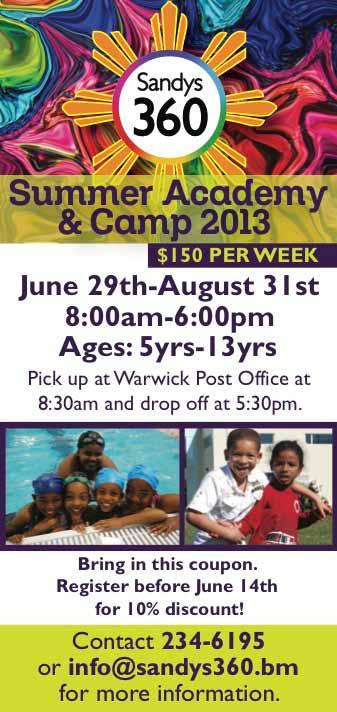
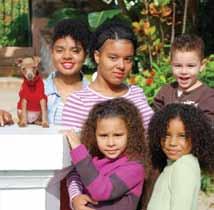
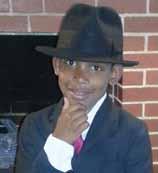





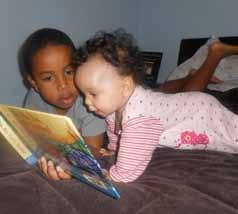






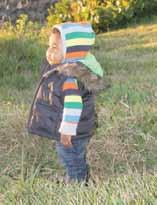









adventureland nursery & Preschool
45 Middle Rd. Warwick WK 05
Tel: 238-8032 or 238-0208
Email: ros.nursery@ibl.bm
Enroll Now! Exciting center-based, fully equipped facility. Quality, caring teachers with CPR and first aid. Spacious classes and playground. Creative thematic curriculum, computers, “kinder-musik” music program, optional dance and Spanish, field trips, summer swimming program. 18 months – 5 years.
7:45 a.m. – 5:30 p.m.
Bermuda School of Music
23 Berkeley Rd. Pembroke HM 11 Tel: 296-5100
Email: musicschool@northrock.bm
Web: www.musicschool.bm
The Bermuda School of Music, a registered Bermuda charity #483, has been providing music education to the Island since 1978. It is our aim to provide community music programs for students of all ages. The school’s faculty offer instruction in piano, voice, organ, guitar, percussion, woodwind and all stringed instruments.
Bermuda Underwater Exploration Institute (BUEI)
40 Crow Lane, East Broadway, Pembroke HM 19
Tel: 292-7219
Email: info@buei.org
Web: www. buei.org
Happy Moments nursery & Preschool
69 North Shore Rd. Hamilton Parish
Tel: 737-8385
Email: happymoments123@yahoo.com
Happy Faces, Happy Learning, Happy Future… Where your child’s day begins with God’s blessings! Bermuda’s premier early childhood educational center, ‘Where quality education remains affordable.’ Academics places an emphasis on language, computer and music program(s). Ages 2–4.
Bermuda School of Russian Ballet
P.O. Box HM 661, Hamilton HM CX
Tel: 293-4147 / 295-8621 or Studio 292-2192
Email: info@balletbermuda.bm
Web: www.balletbermuda.bm
DanceSations
Tel: 335-3271
Email: missholly@dancesations.bm
Web: www.dancesations.bm
to be listed in our directory in the magazine and on our website, contact us at bermudaparentmagazine@gmail.com
La Leche League of Bermuda
Tel: 236-1120
Email: islandgirl@northrock.bm
La Leche League of Bermuda is a registered charity that provides motherto-mother support and encouragement for breastfeeding, as well as the latest, evidence-based medical information. Our work is provided without charge by skilled, accredited leaders. We offer monthly support group meetings, an email and telephone hotline, and an extensive lending library.
DanceSations is a program with structure incorporating many different aspects of a dance program while keeping it fun and entertaining. Students learn self-discipline, concentration, self-confidence, the value of teamwork and an appreciation of the arts. We are just as excited as the children to host a program that allows them to creatively explore the fine arts.
Visit www.bermudaparentmagazine.com for more info.
Bermuda Cancer & Health Centre
46 Point Finger Rd.
Paget DV 04
Tel: 236-1001
Web: www.chc.bm
A specialist approach to patient care. Call us today.
Baby Boot Camp
Tel: 441-537-5370
E-mail: elinor@babybootcamp.com
FB: www.facebook.com/ babybootcampbermuda
Web: www.balancedfitness.bm
Baby Boot Camp Bermuda is a 60minute fitness class for mom and baby. Baby Boot Camp caters to all fitness levels: pregnant moms, new moms recovering from pregnancy and conditioned moms with stroller-aged children. Cardio drills and strength training exercises increase overall fitness and give a total body workout!
Care@Home Services
Tel: 295-2273
Email: care@myhome.bm
Web: www.care-at-home.info
Care@Home Services provides personal in-home care solutions (nannies and housekeepers) to Bermuda resident families. Trusted. Experienced. Caring.
Sugar Rush Cakes
Tel: 337-6171
Email: sugarrushbda@yahoo.com
Web: sugarrushbermuda.com
Bermuda Linens & gifts
16 Water Street, St. Georges
Tel: 296-0189
Web: www.bermudalinens.com
At Bermuda Linens & Gifts, there are big ideas for little ones … and big values for you, the customer. With attention to detail and design flair, you will find trendy baby gifts, baby accessories and so much more! Add great packaging and free gift wrapping for a one-stop shopping experience.
norwex Enviro Products
Tel: 296-6833 or 336-6833
Email: mrc@logic.bm
Norwex Microfiber Cloths … there’s no other cloth like it! Norwex has developed a unique technology that combines an antibacterial silver-based agent with our microfiber. The antibacterial agent is actually embedded inside the tiny microfiber. It destroys the bacteria that it picks up in its fibers.







